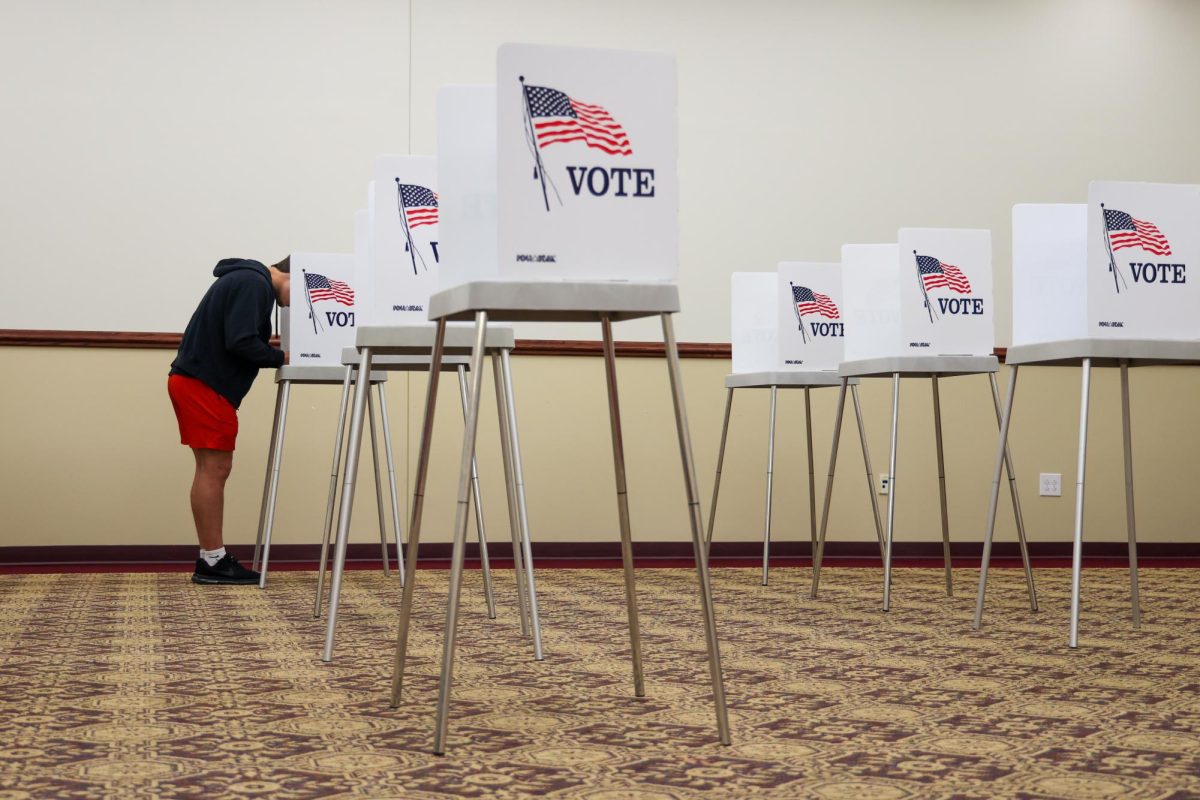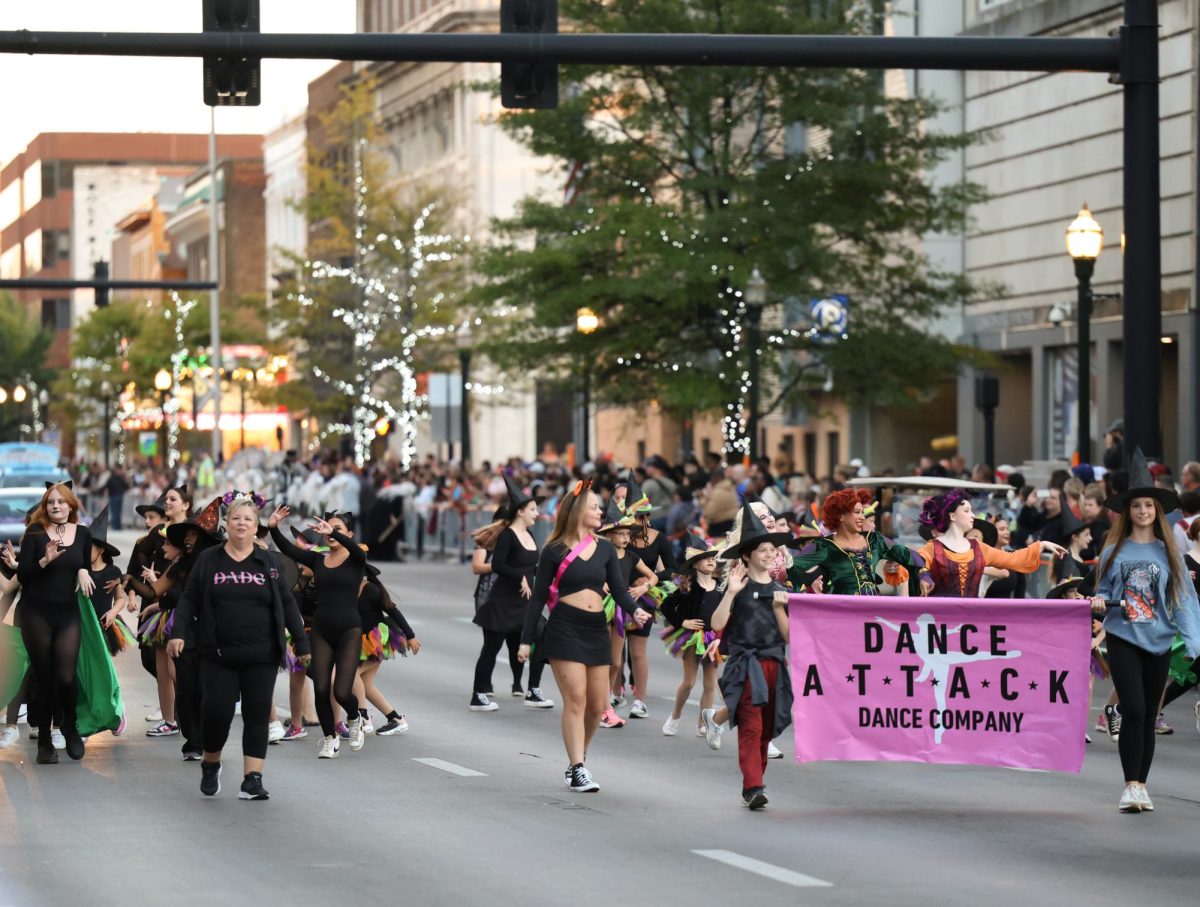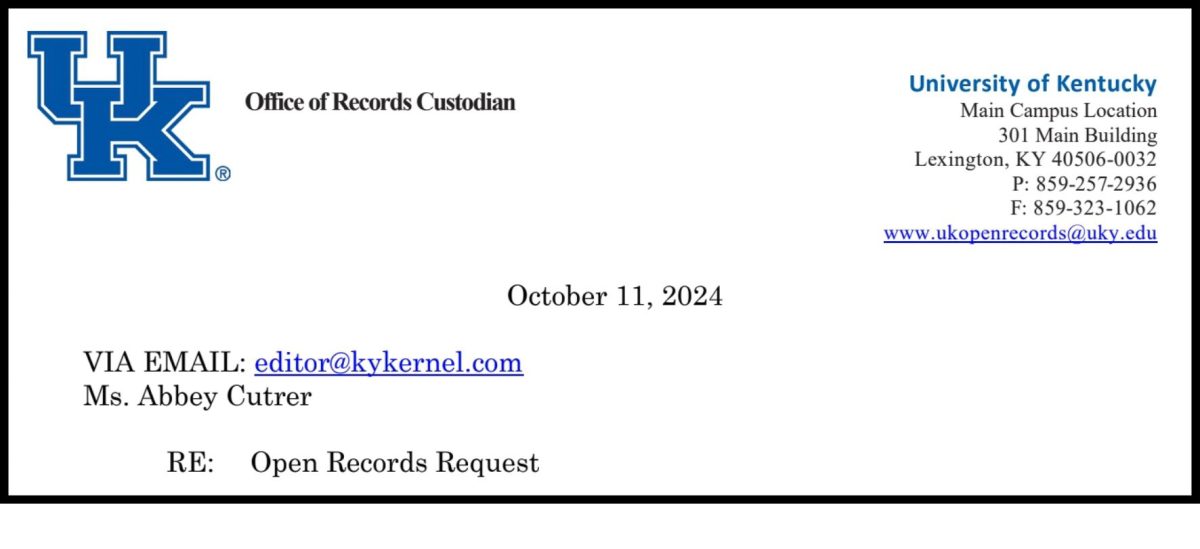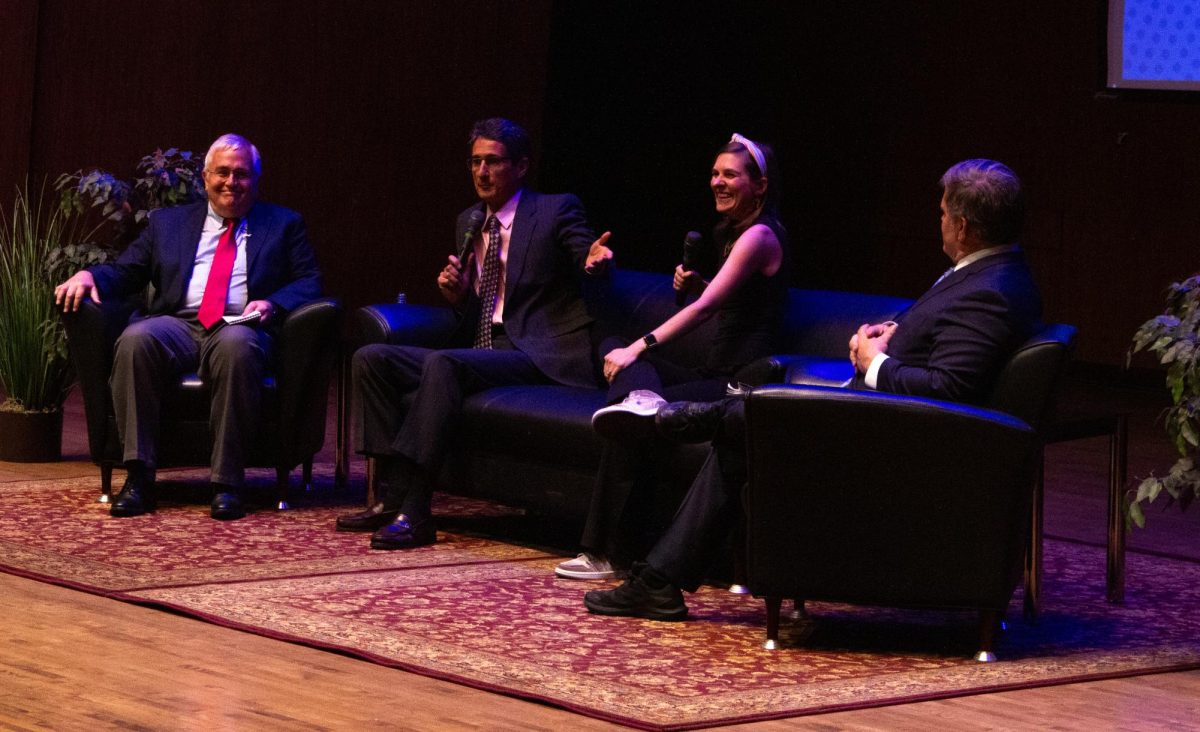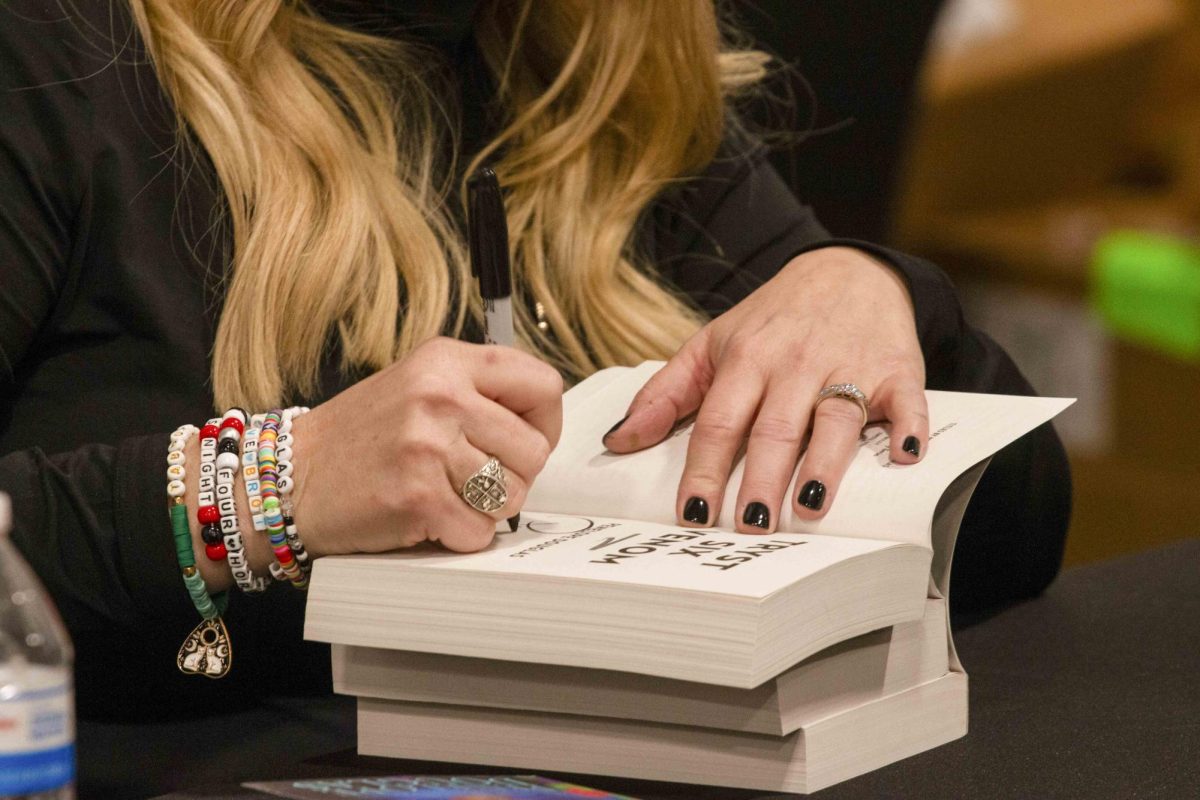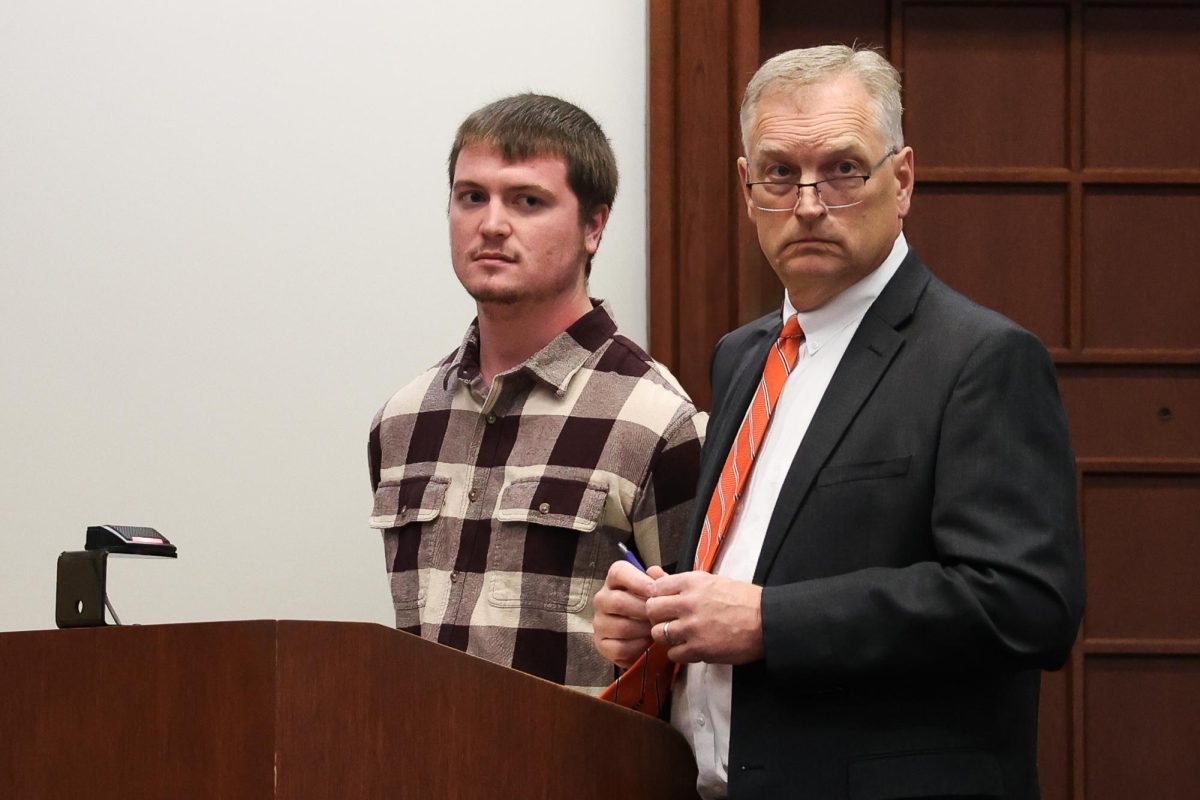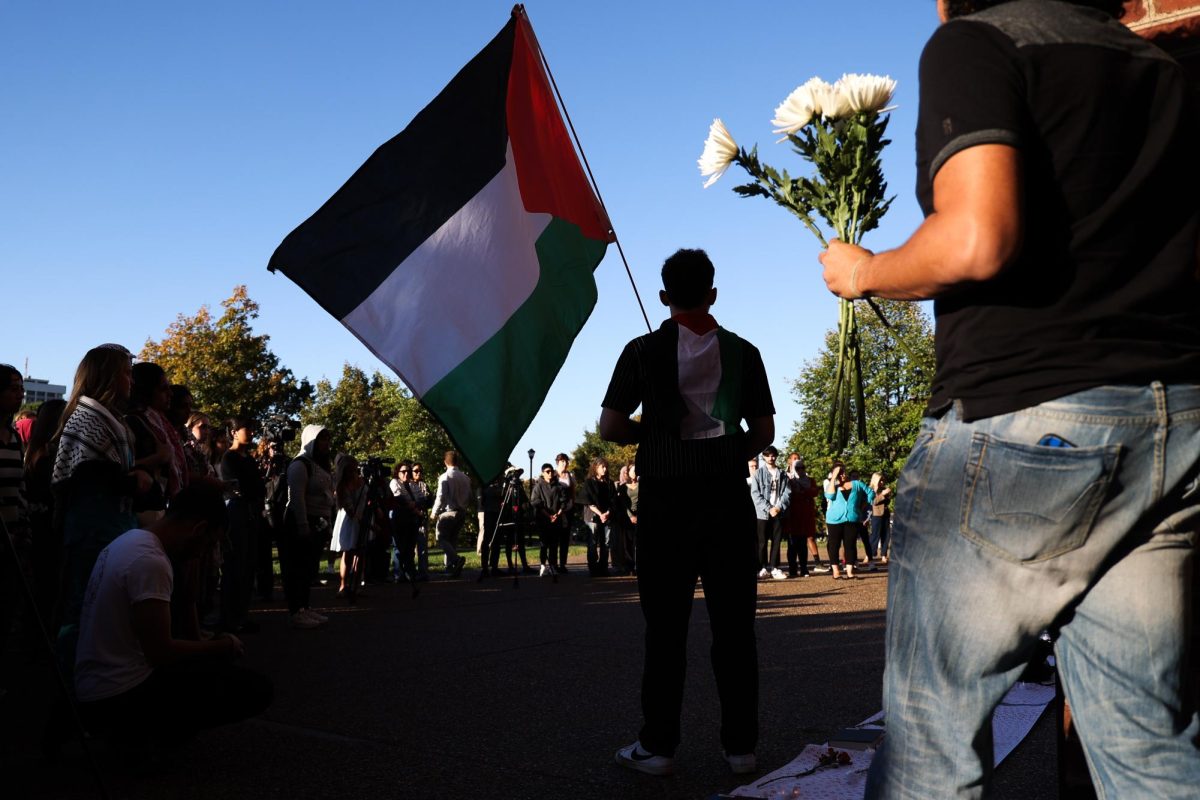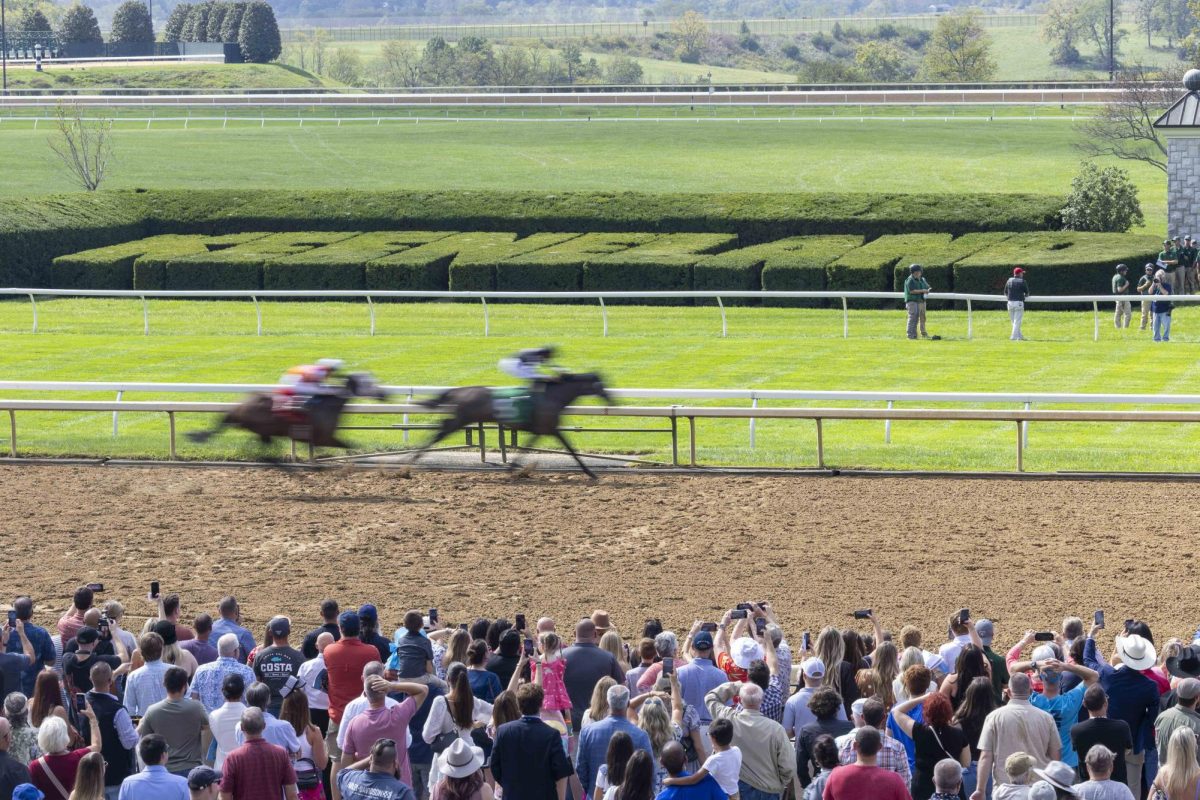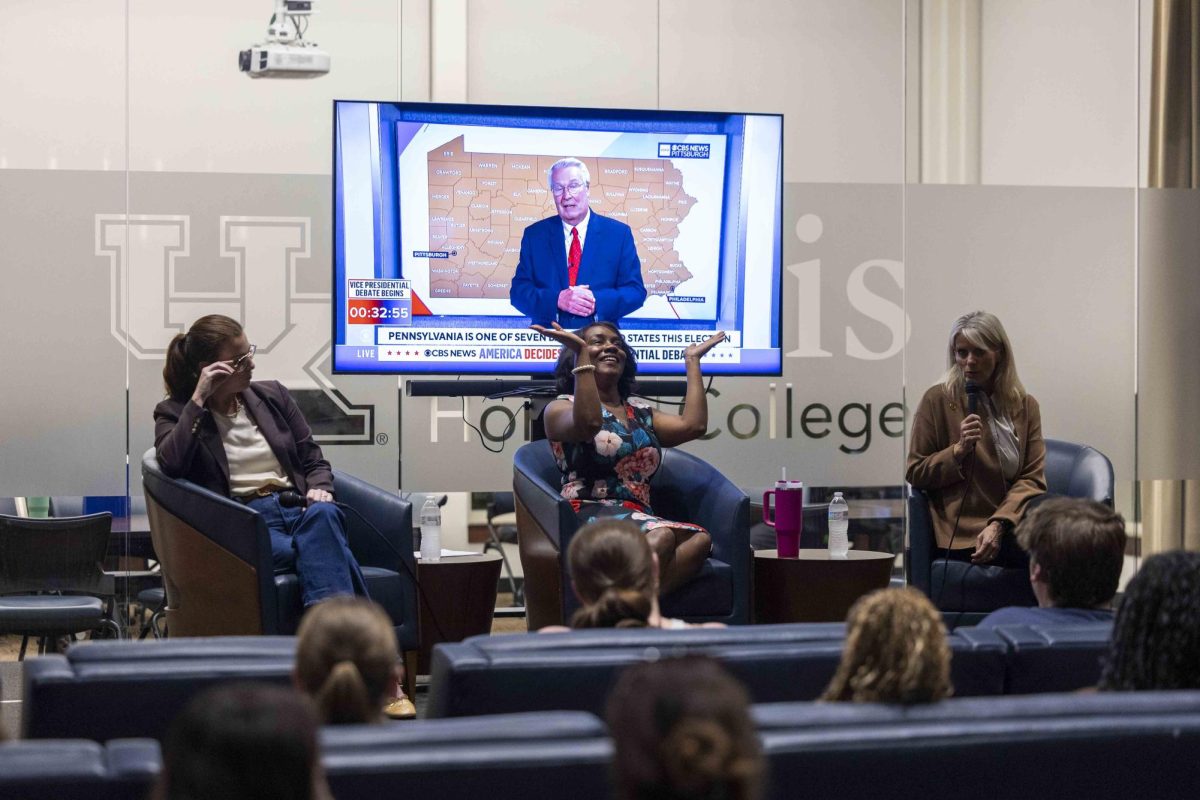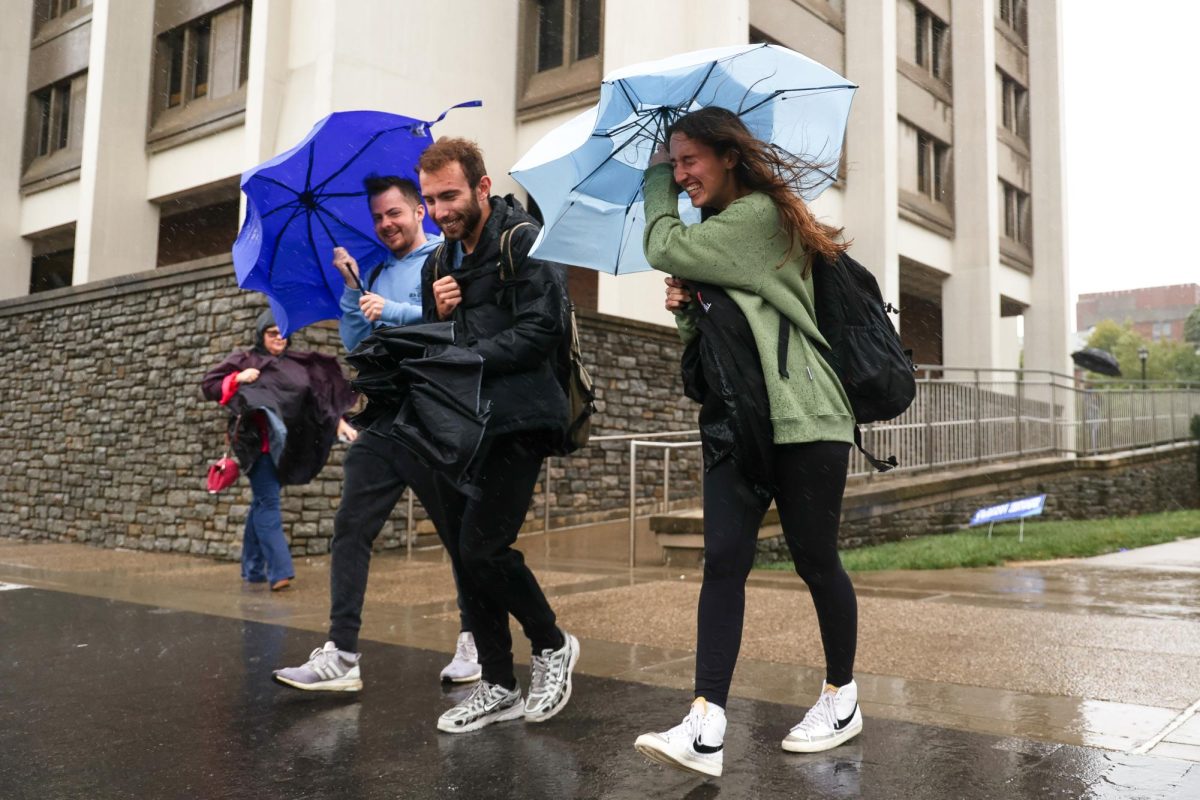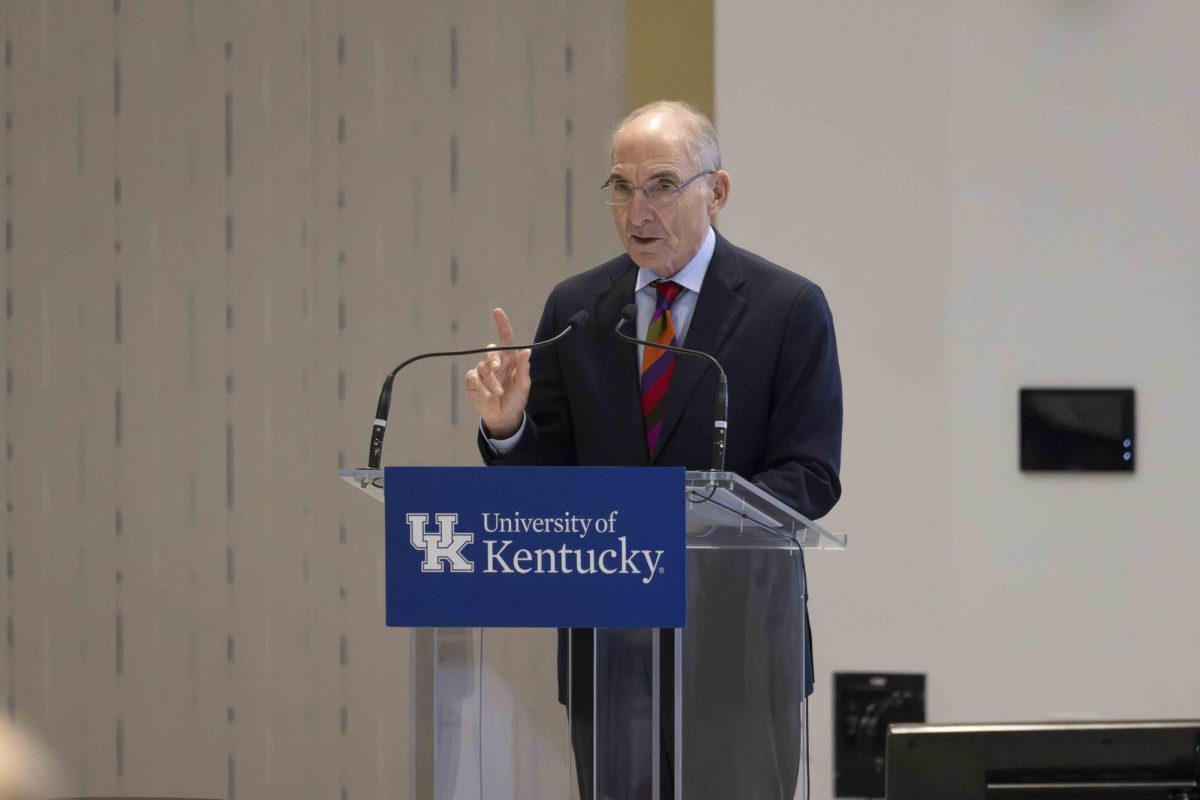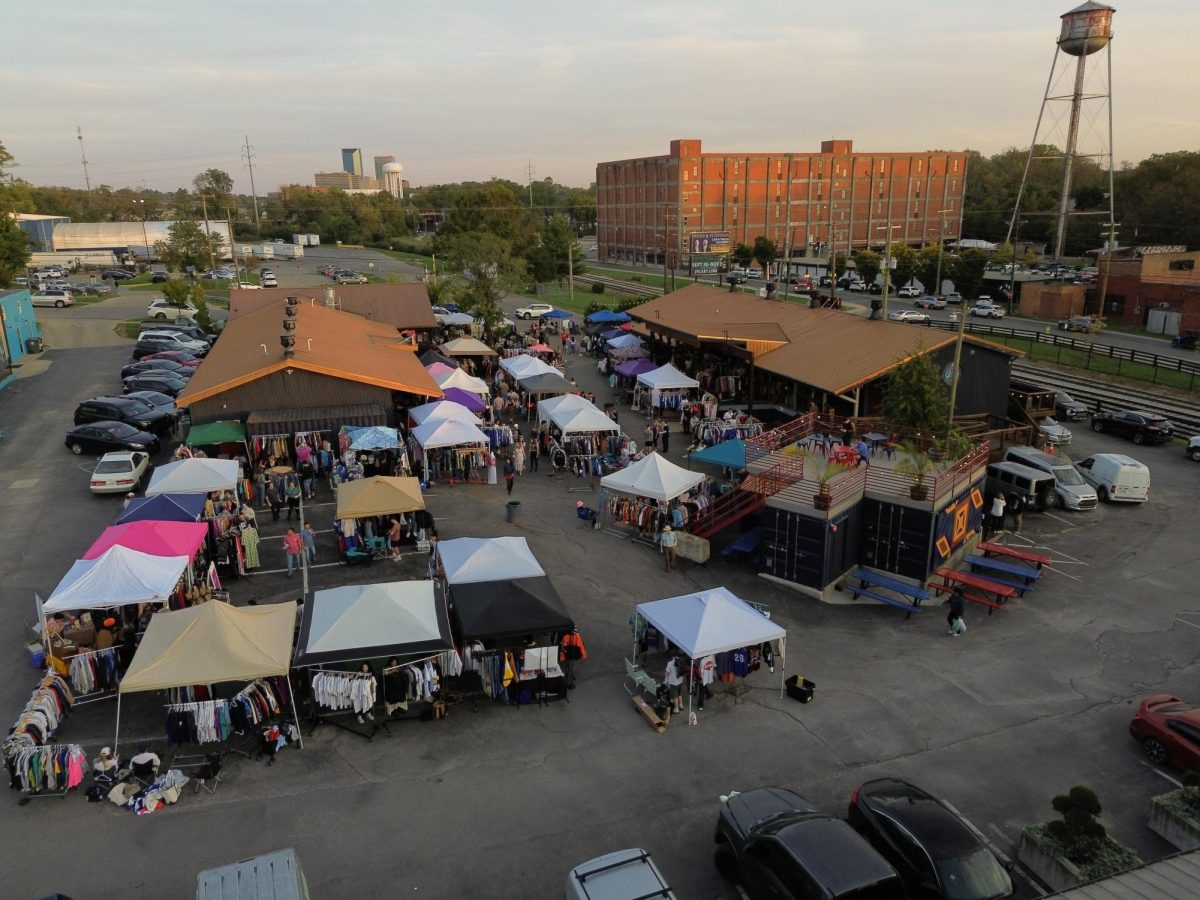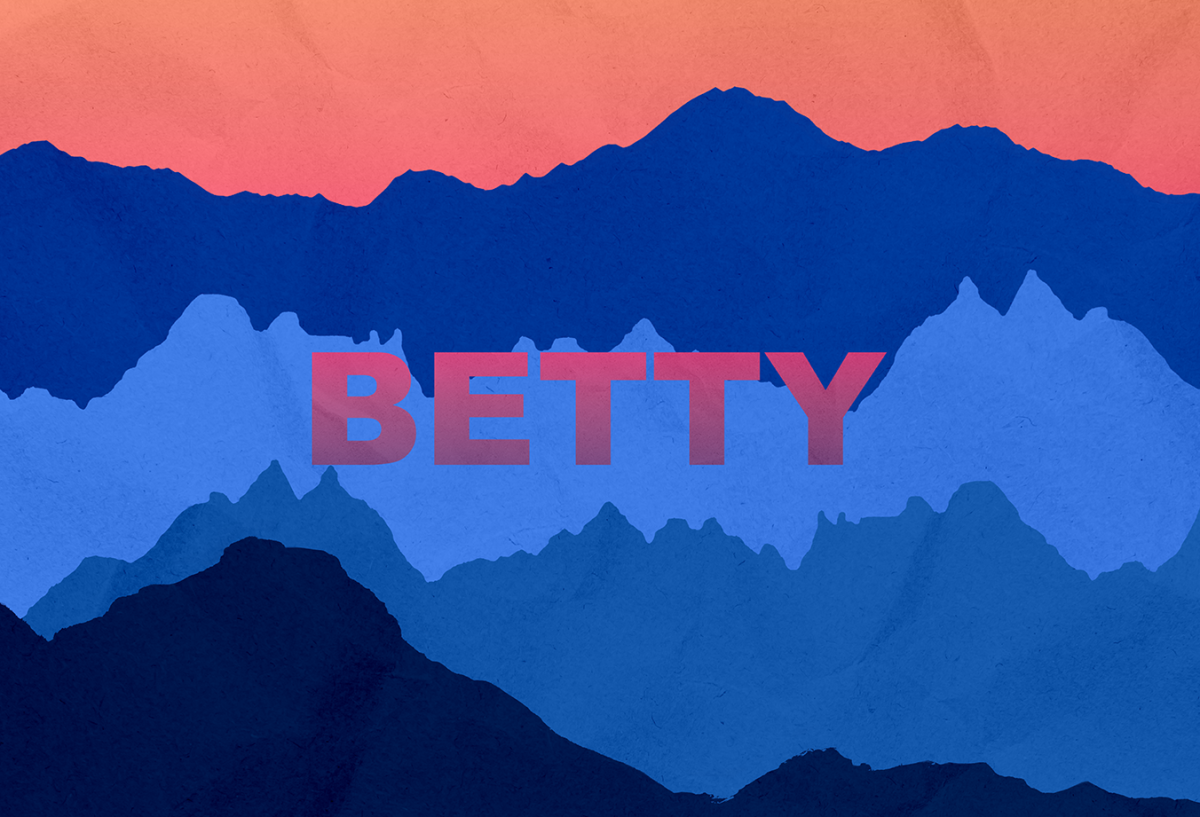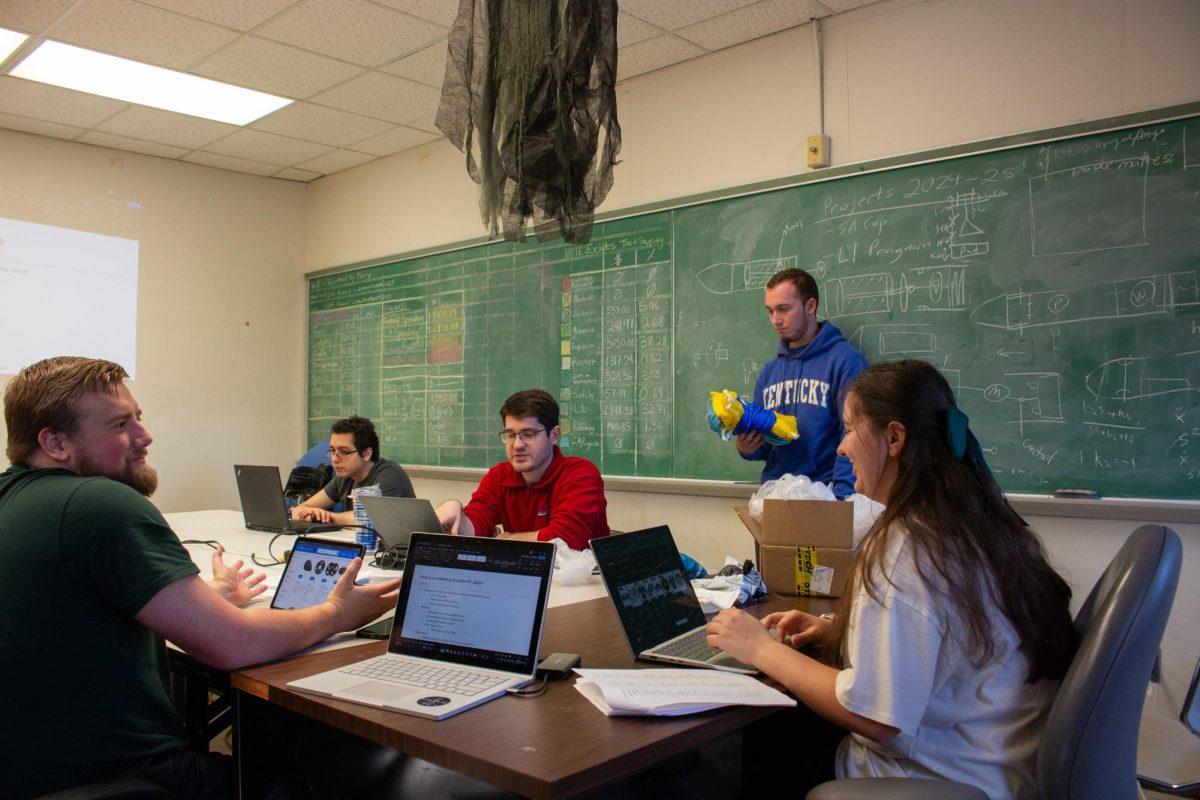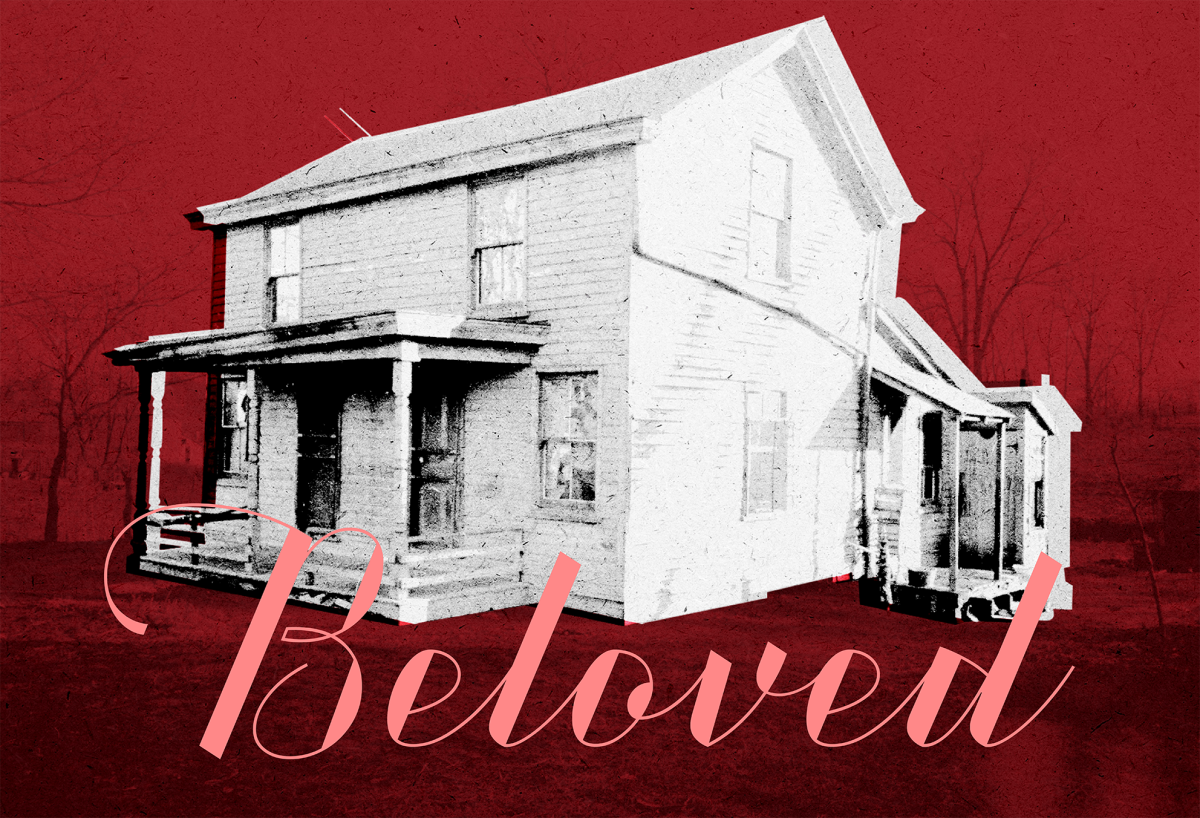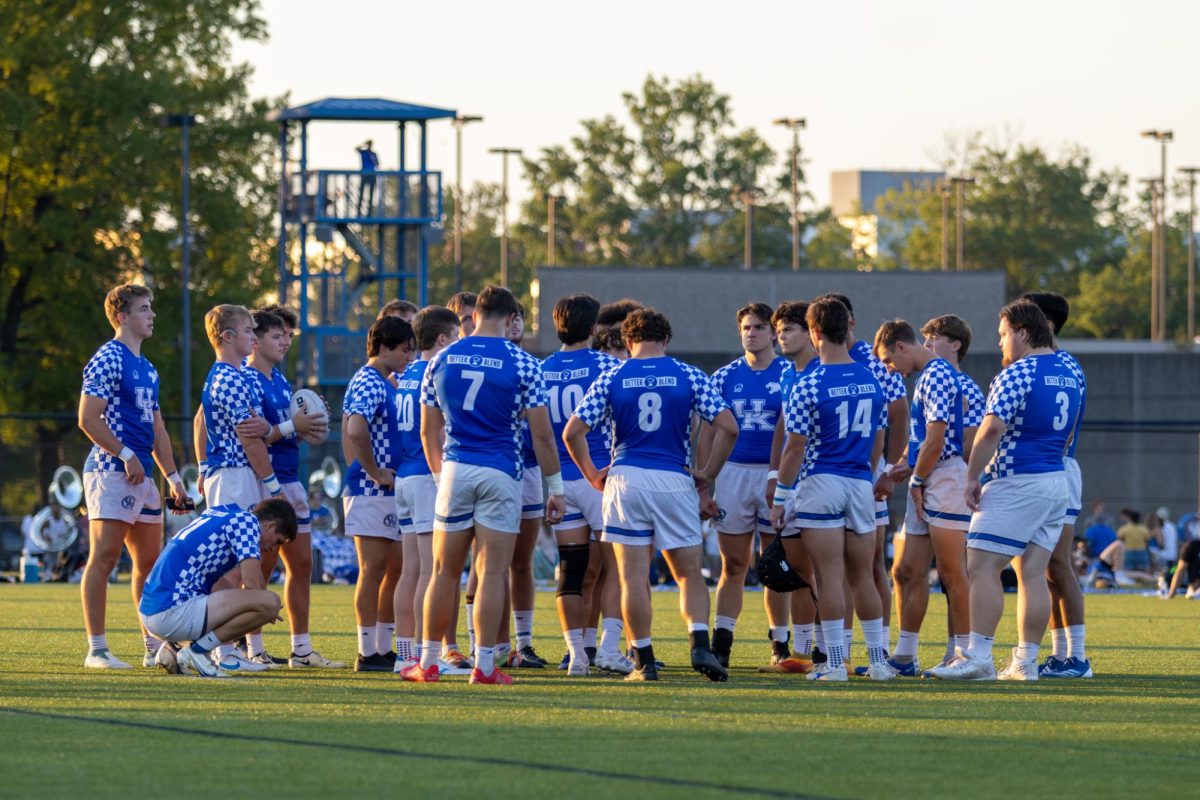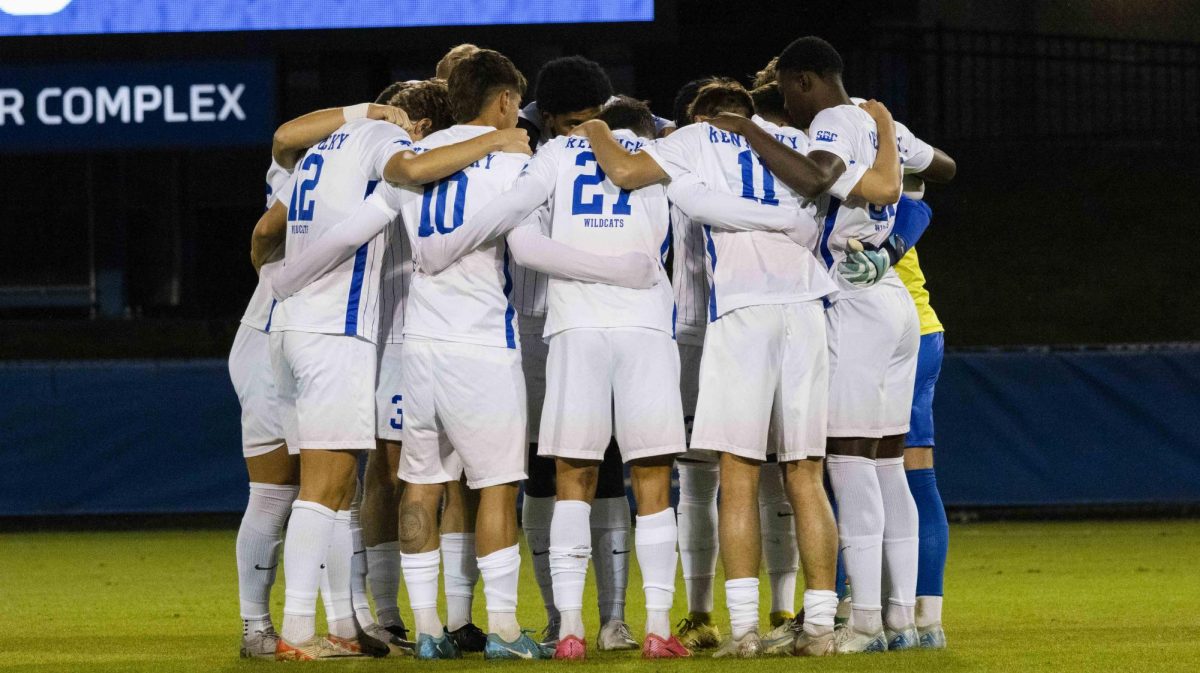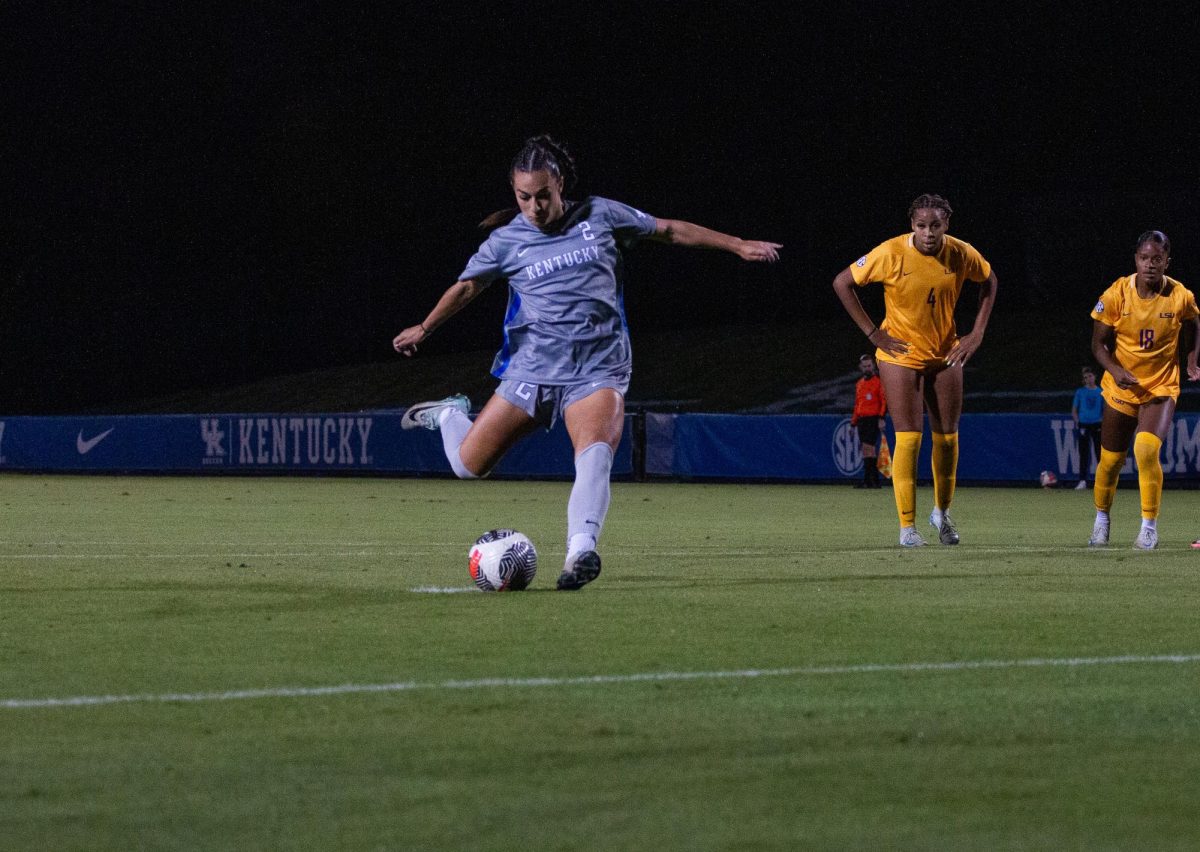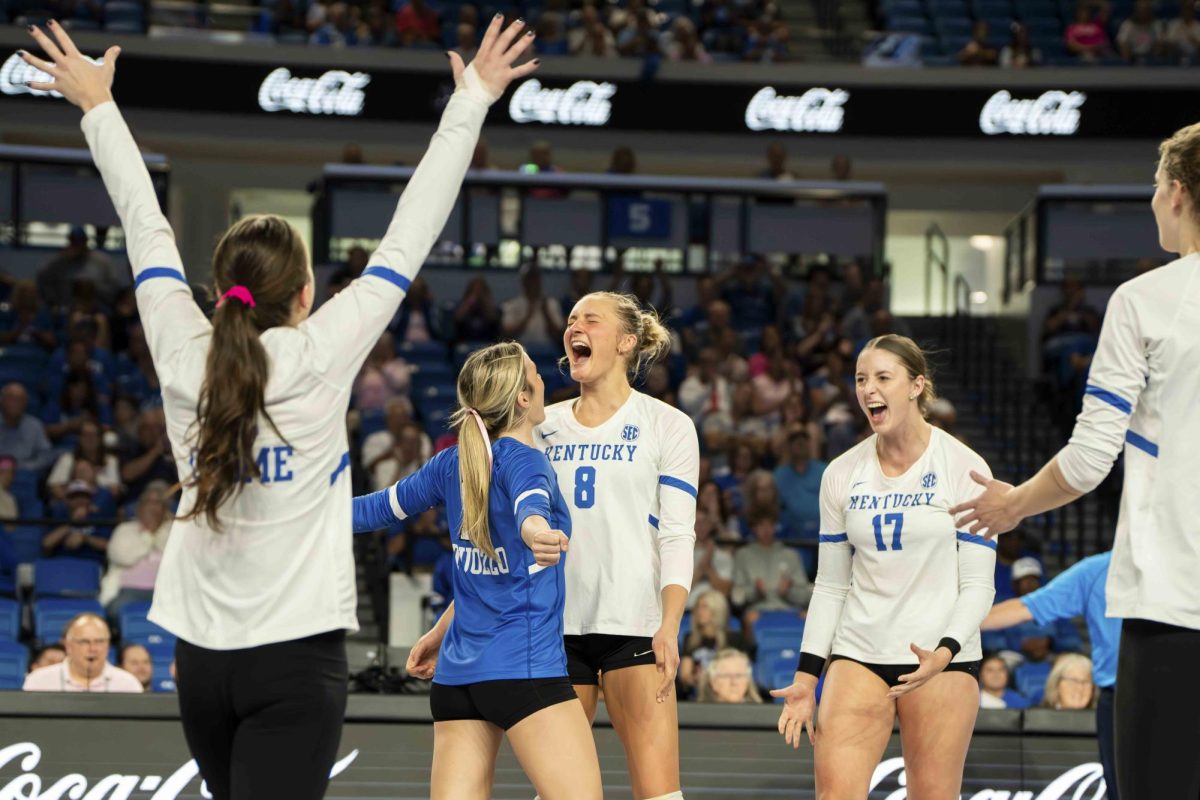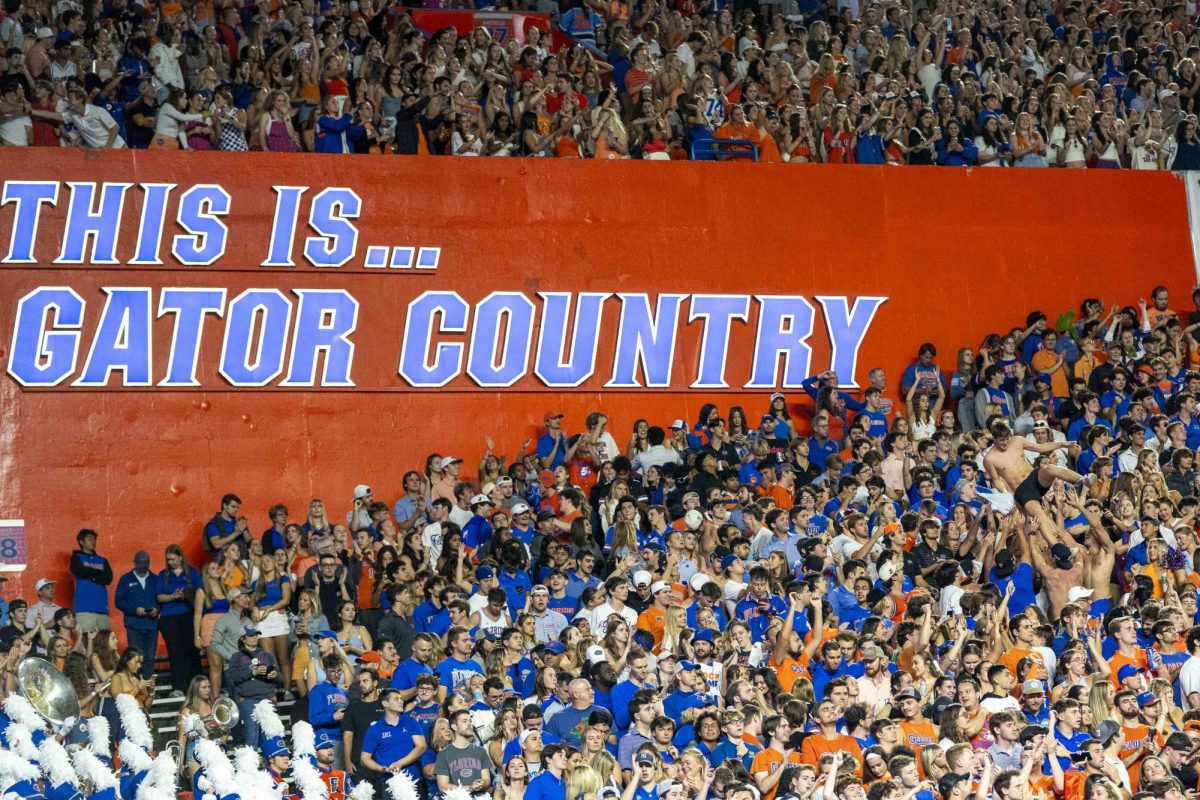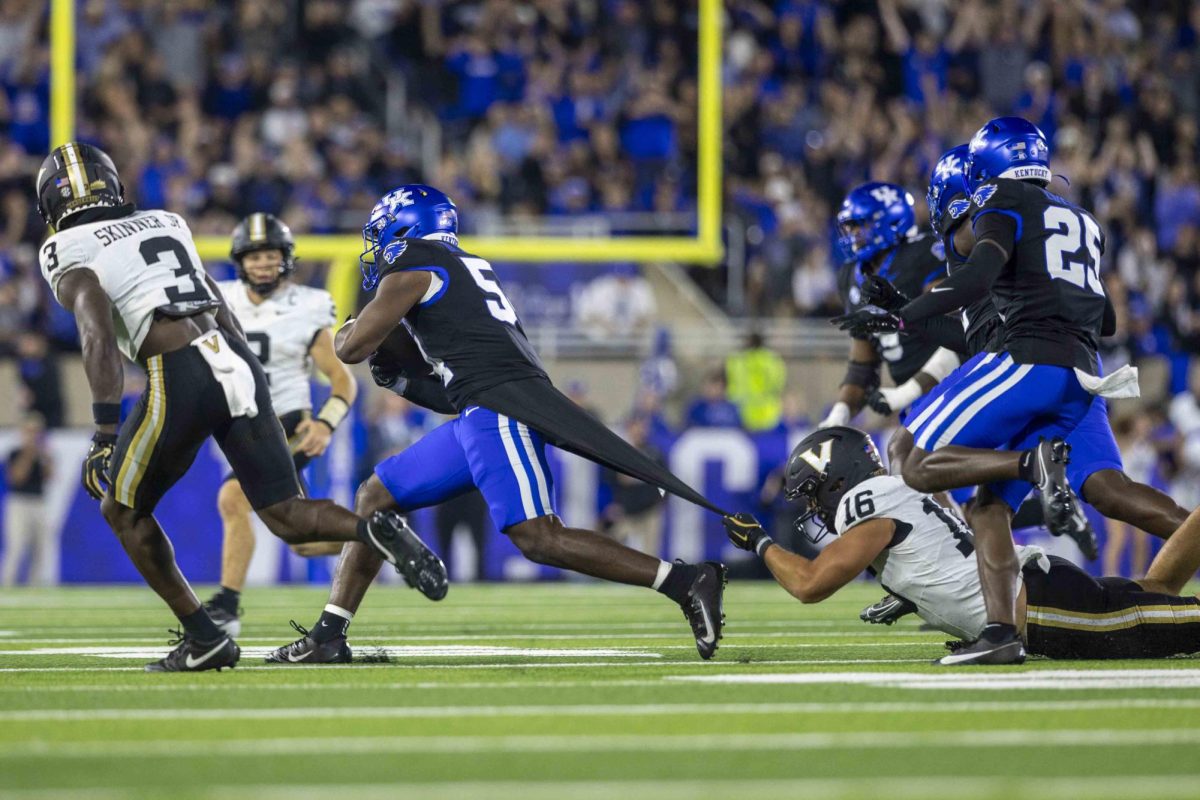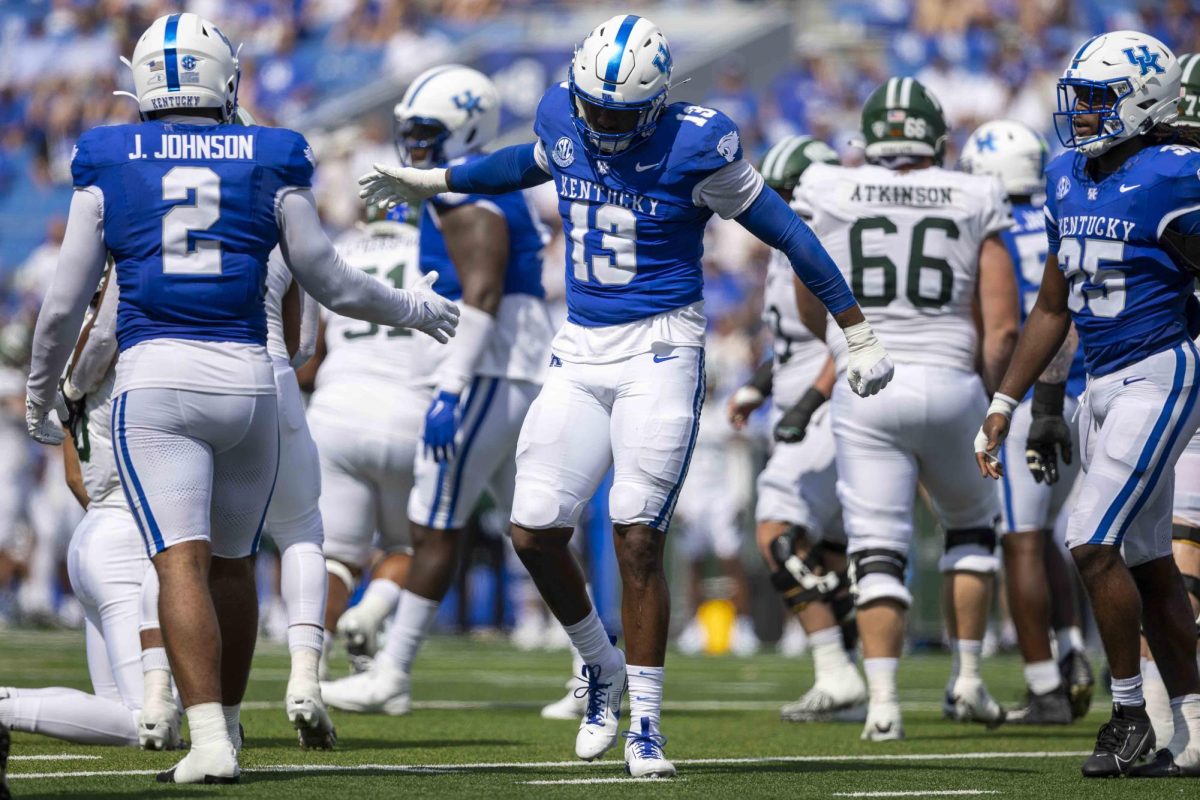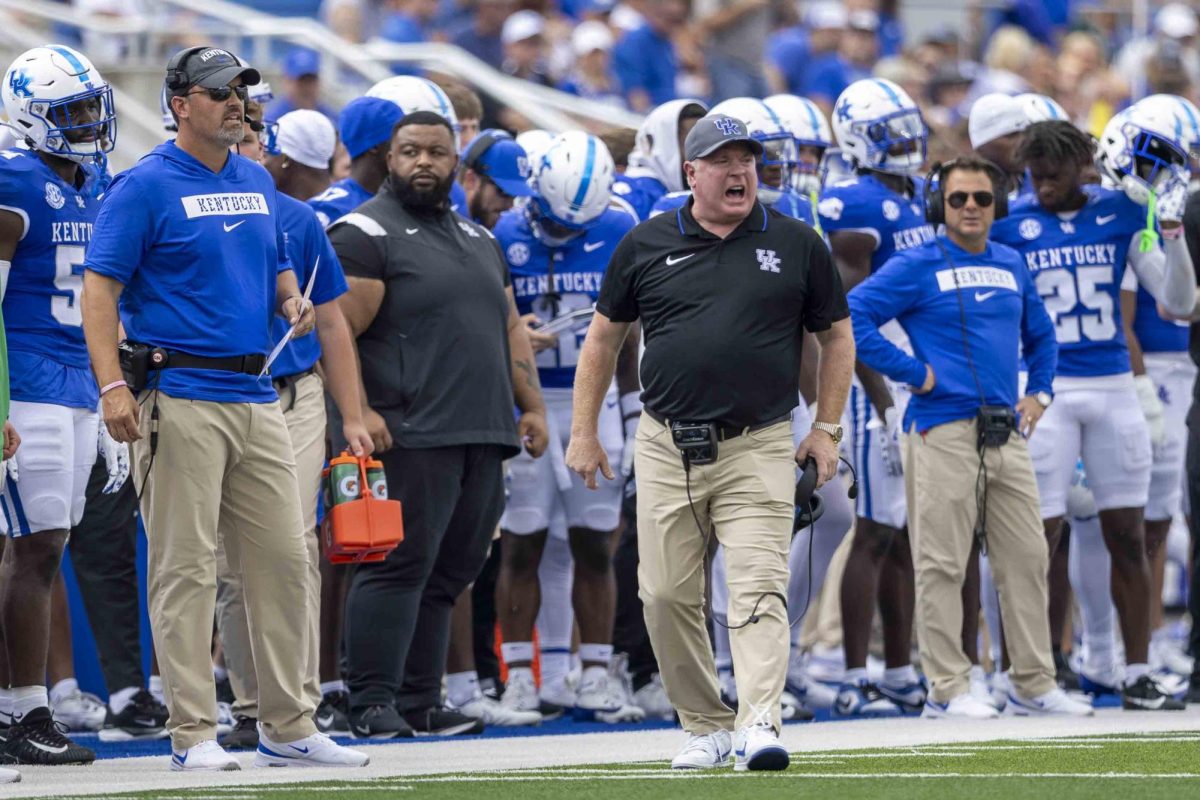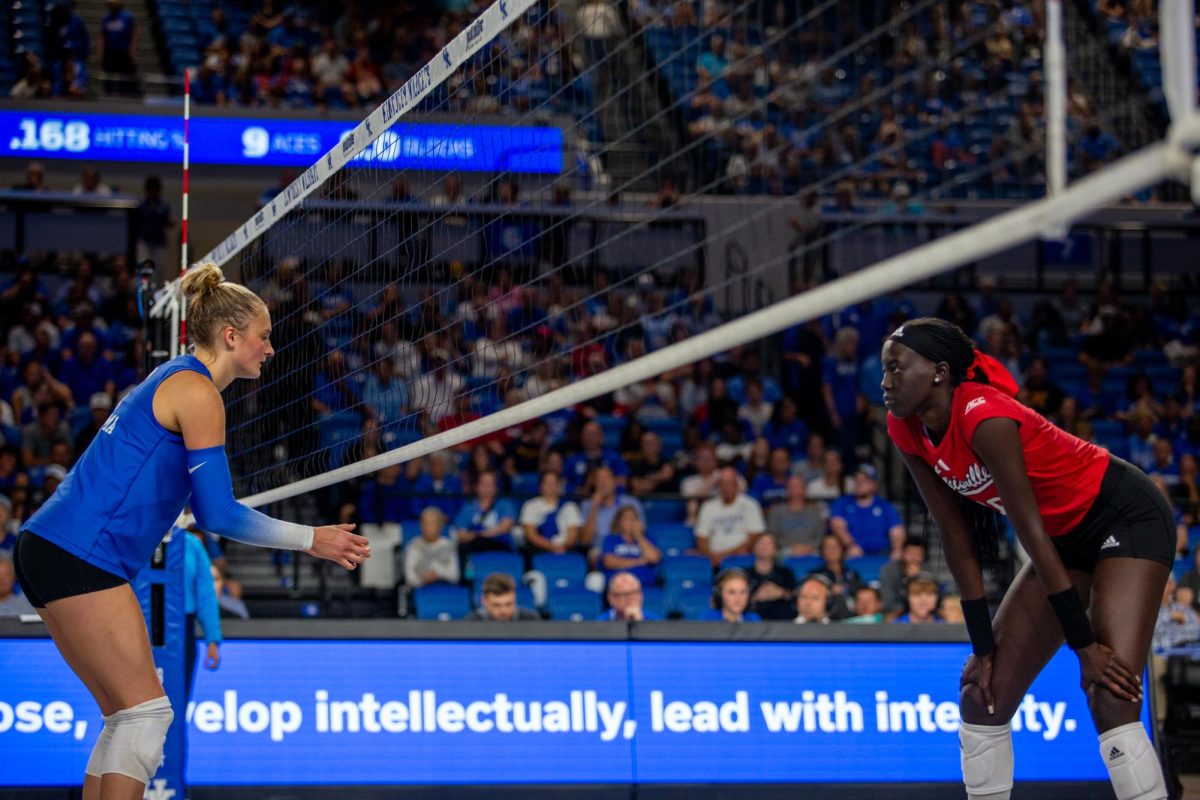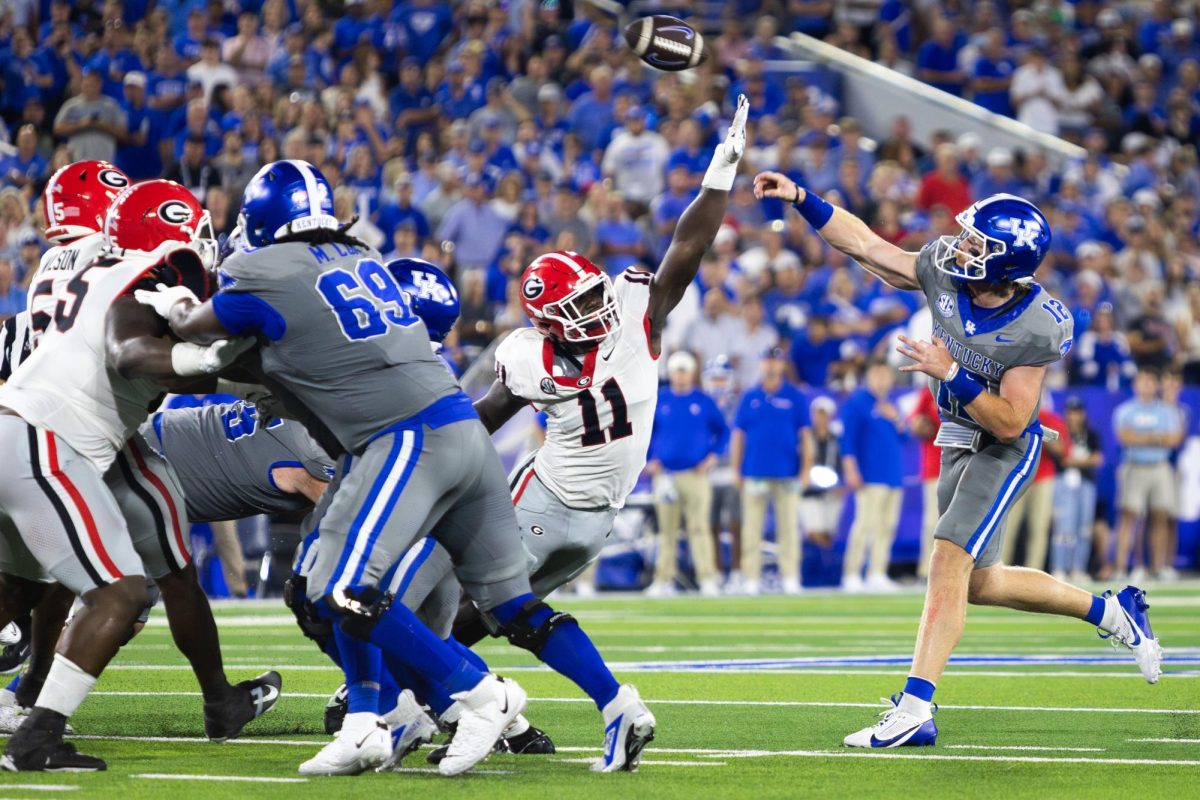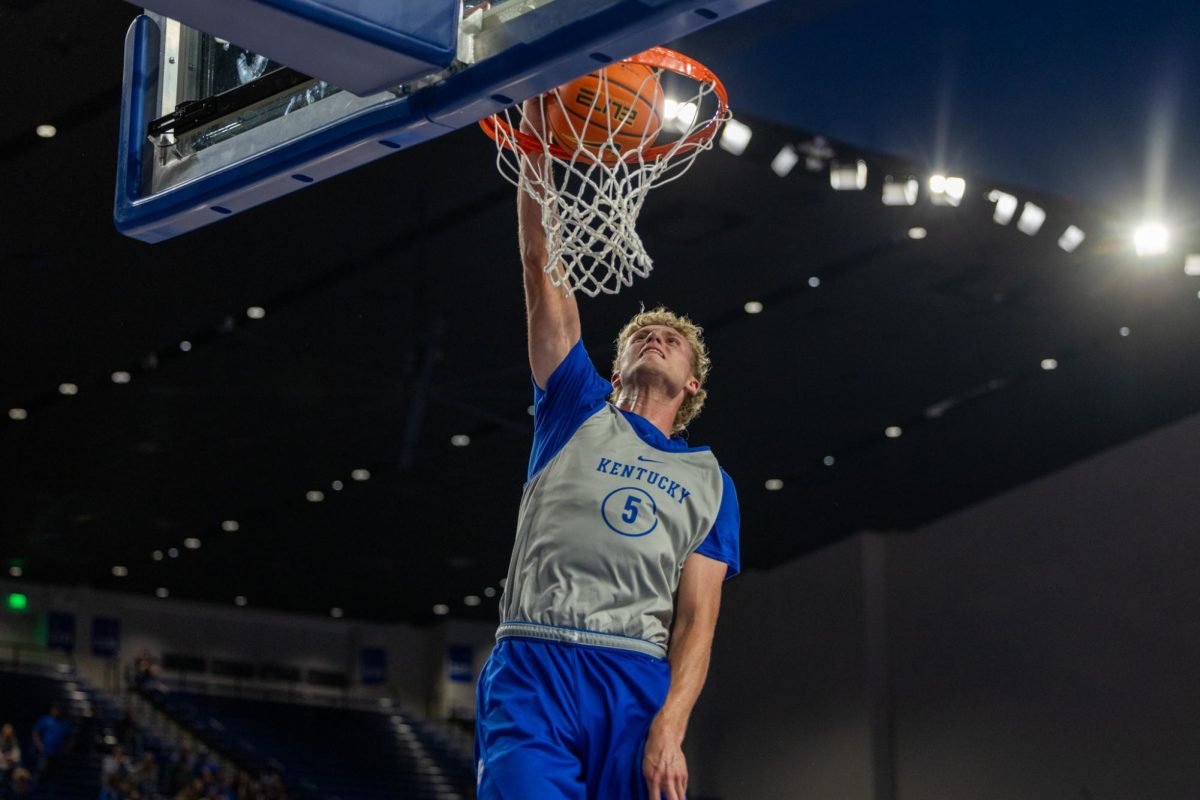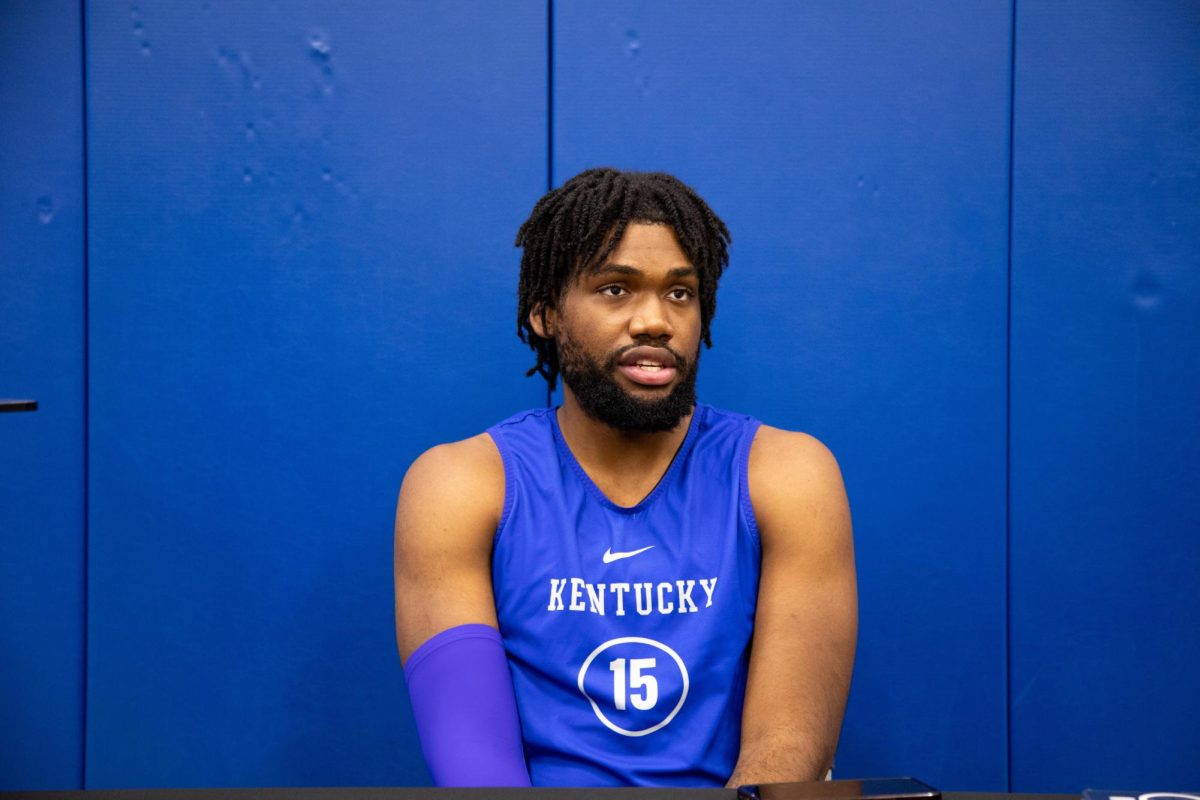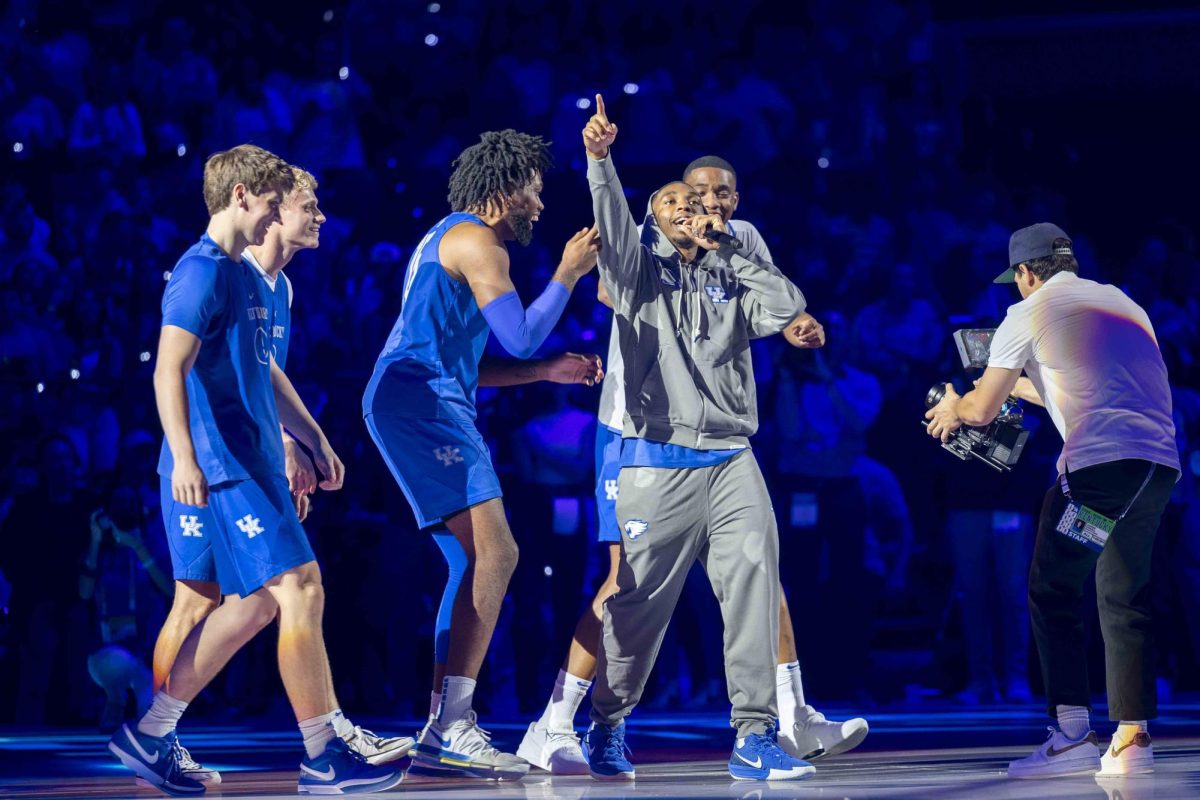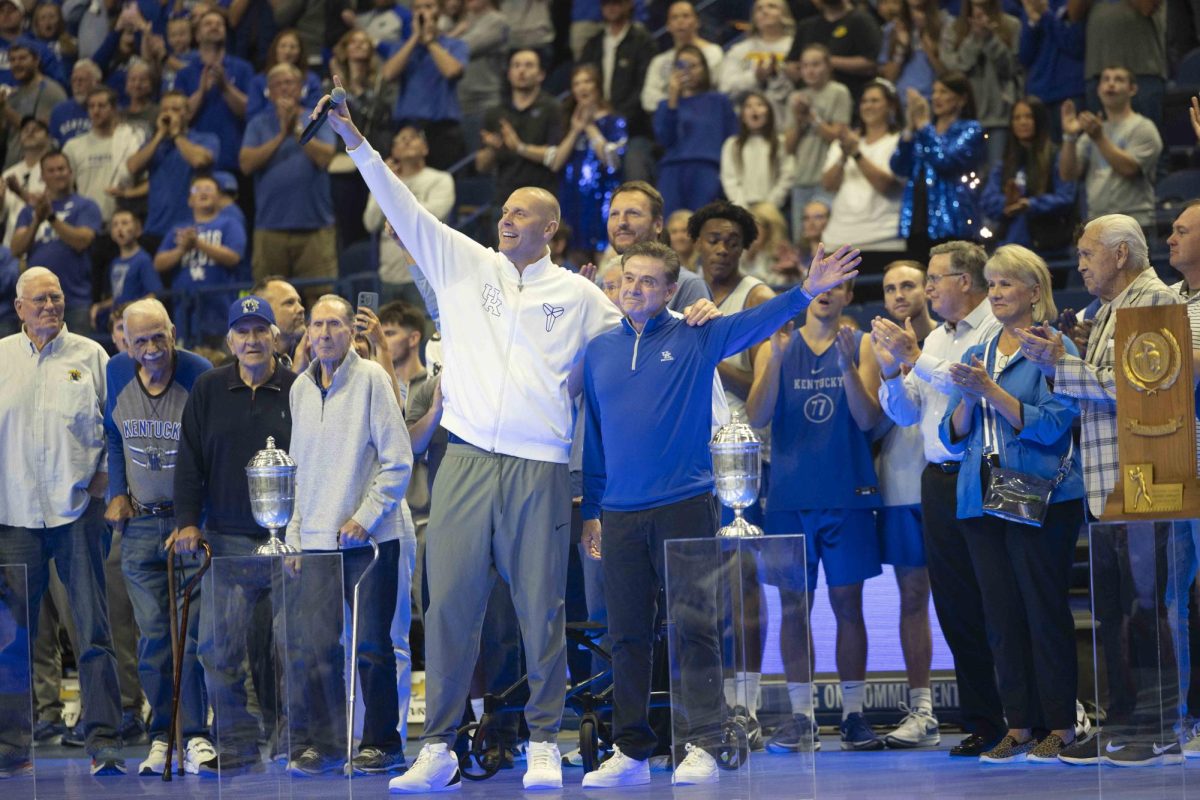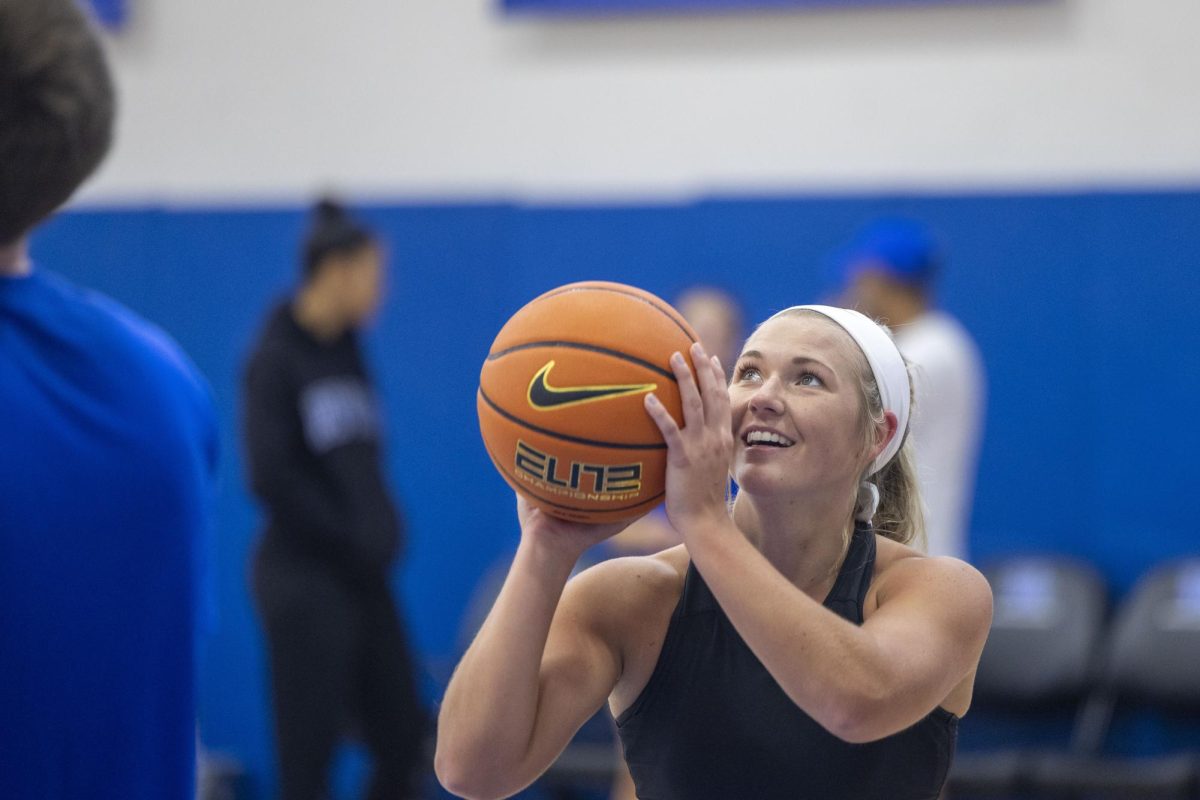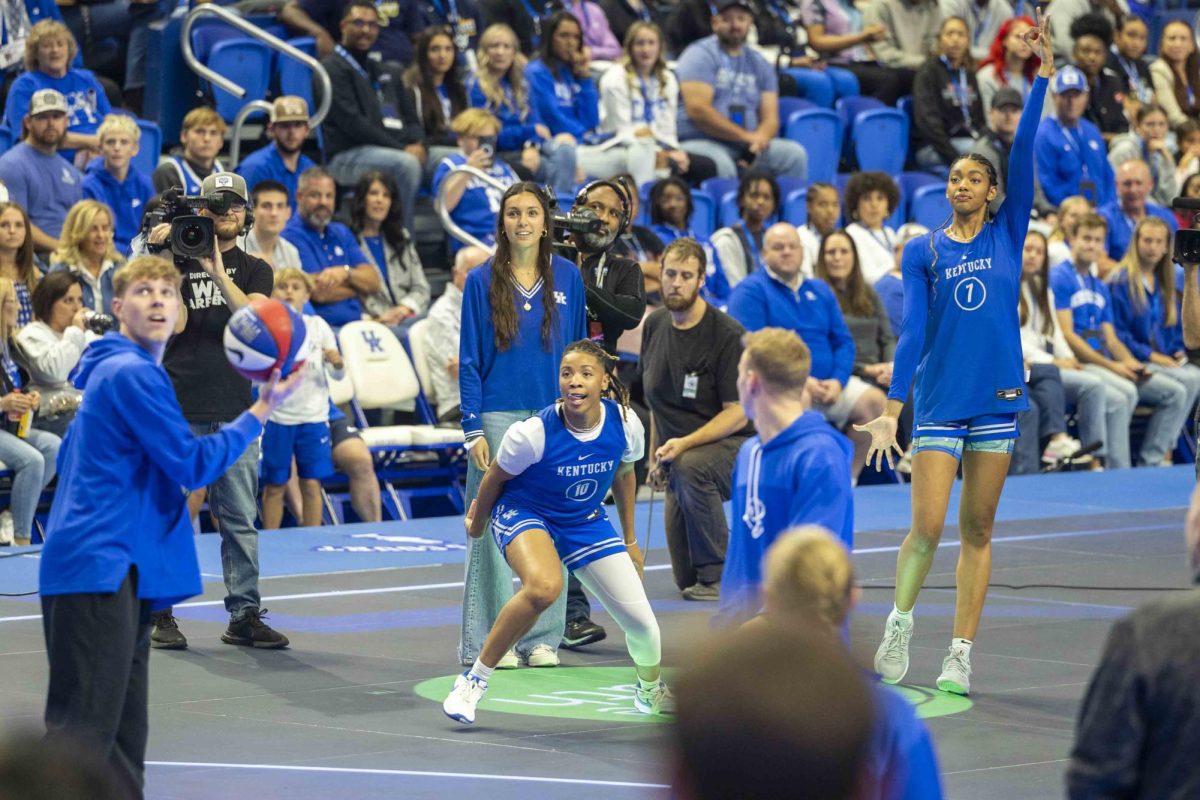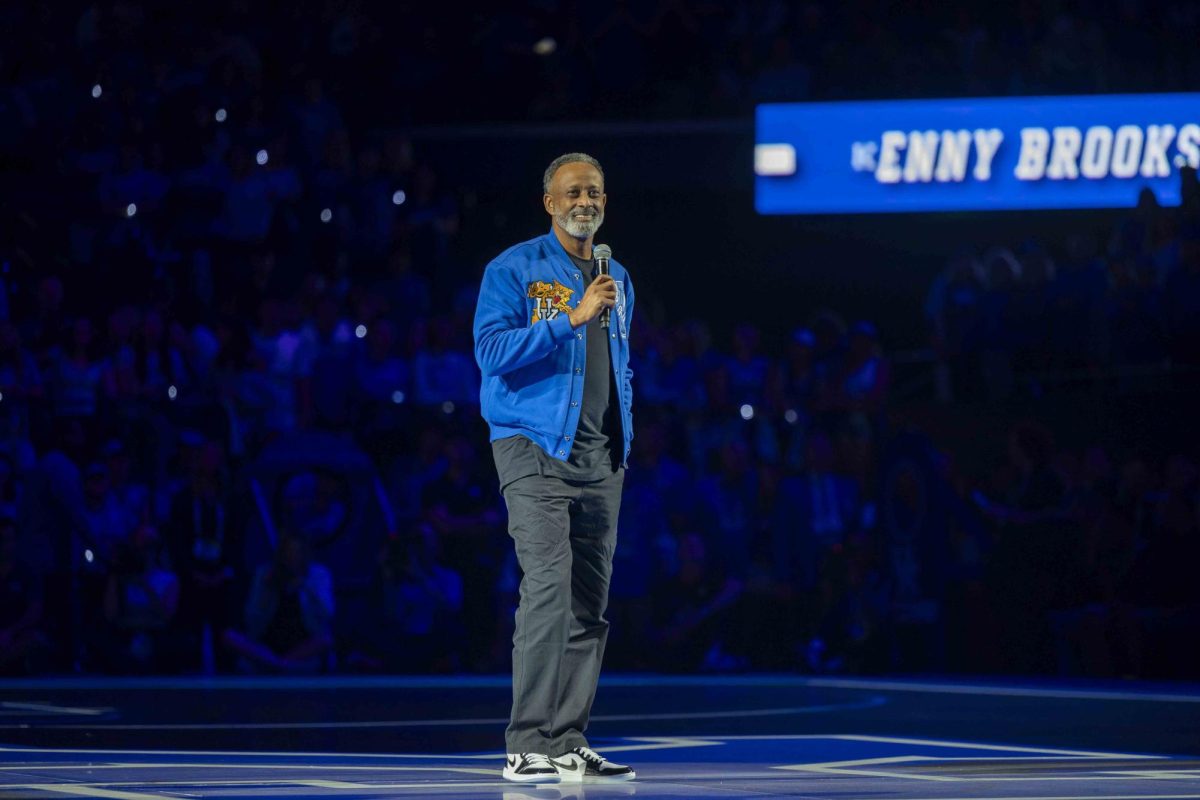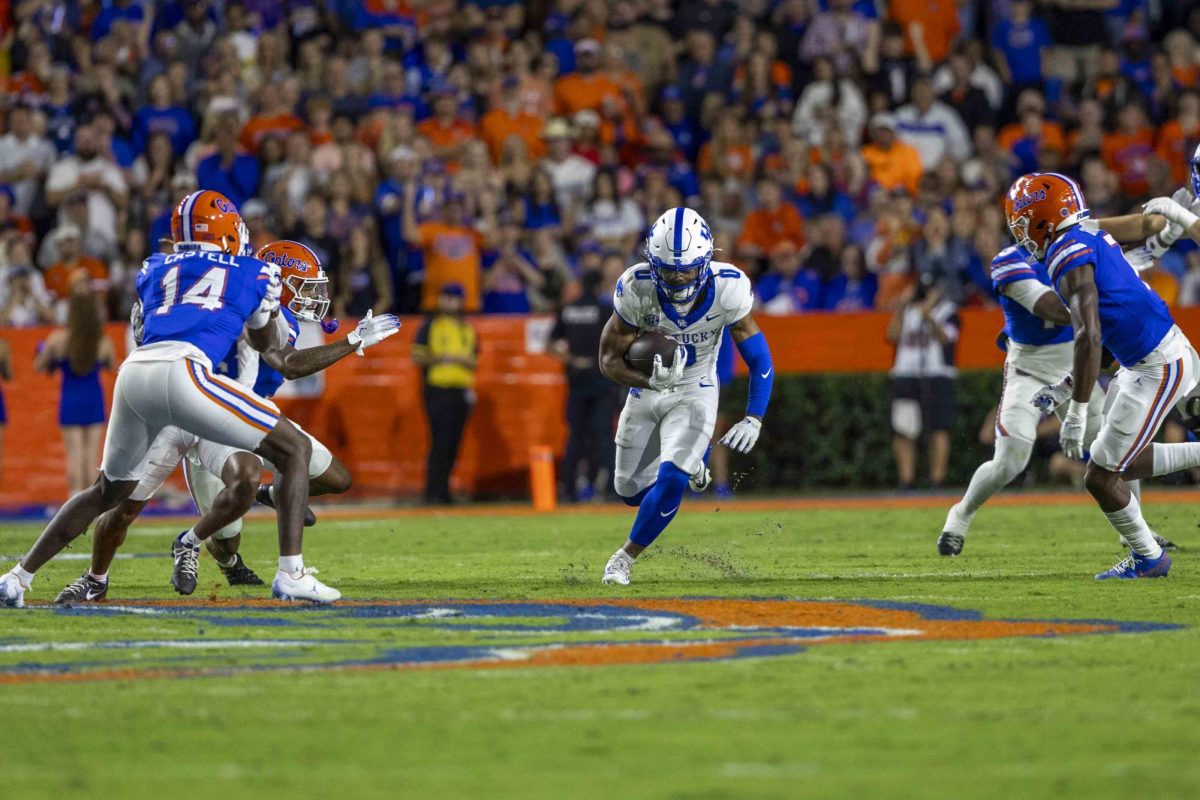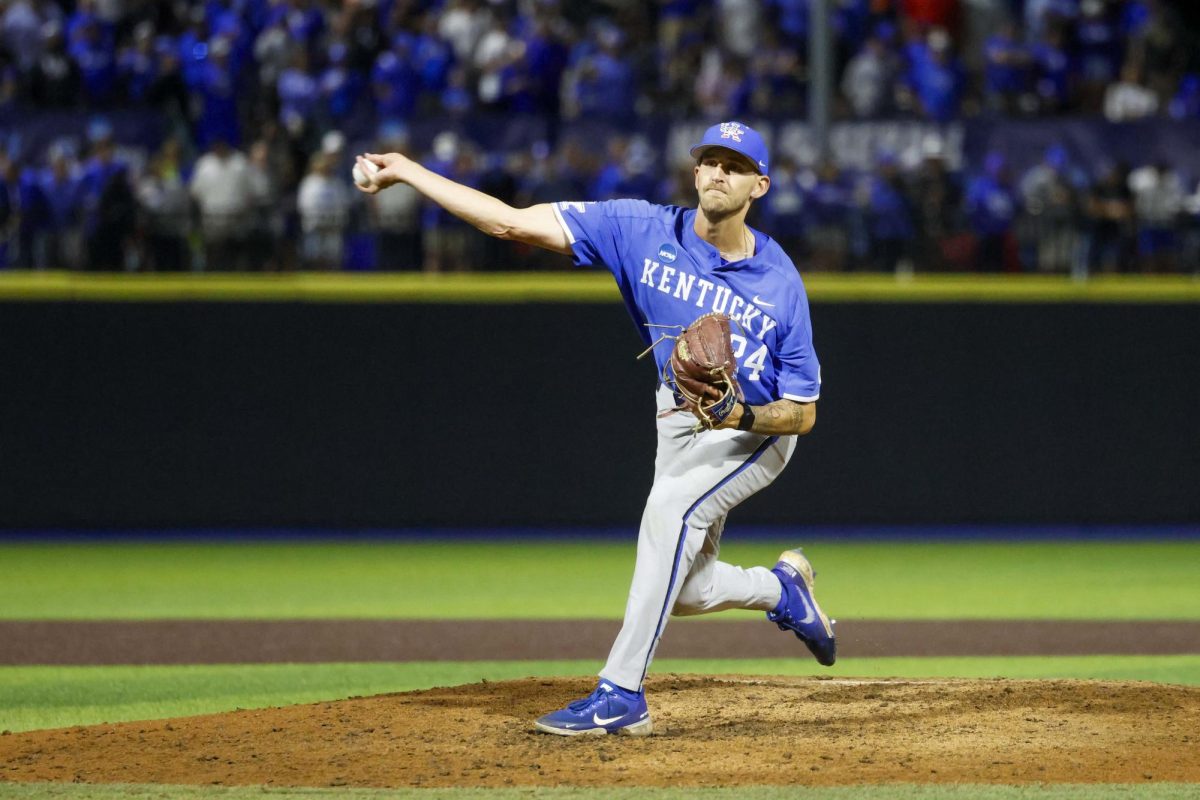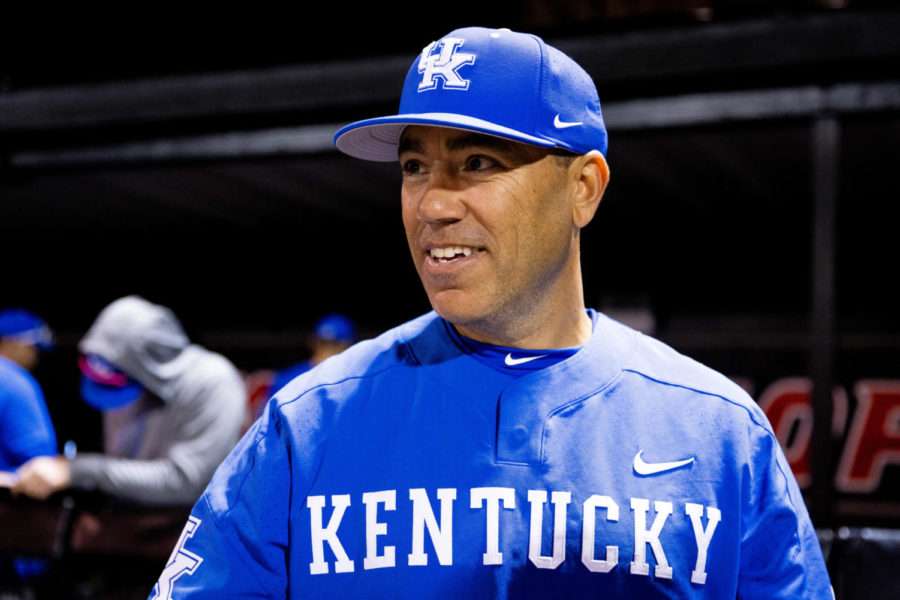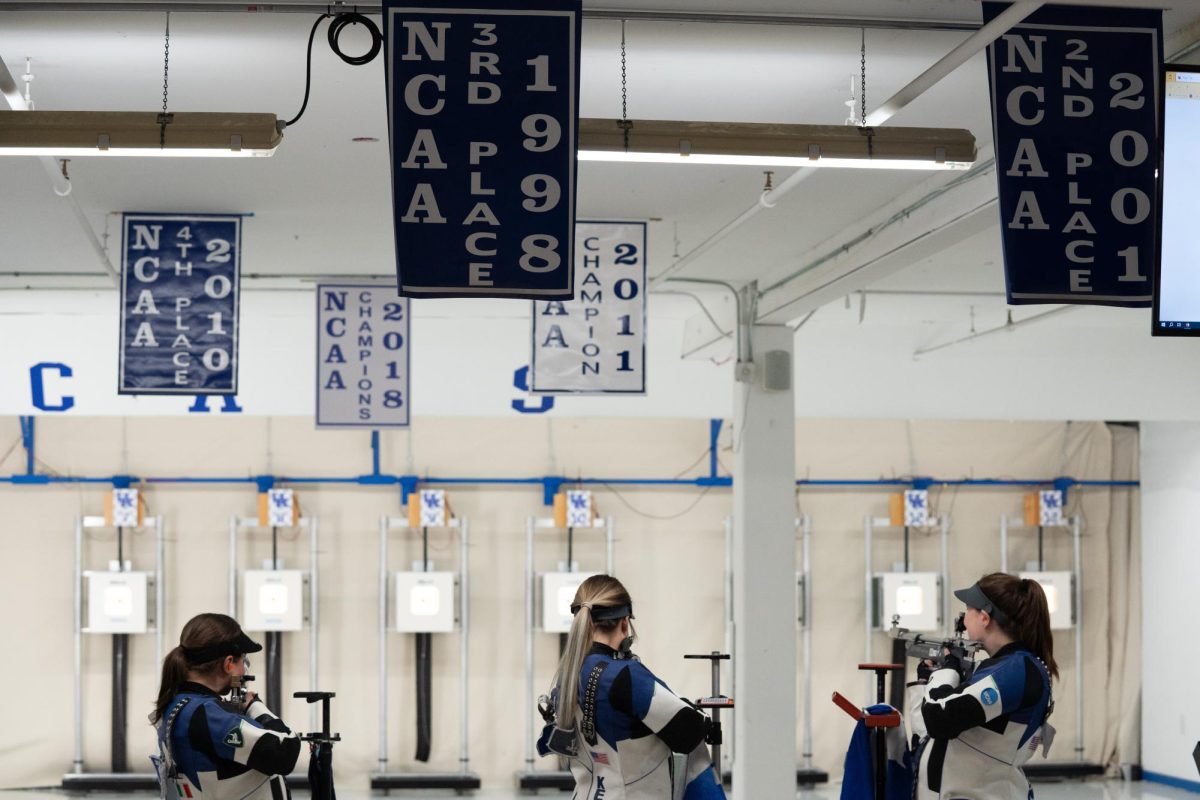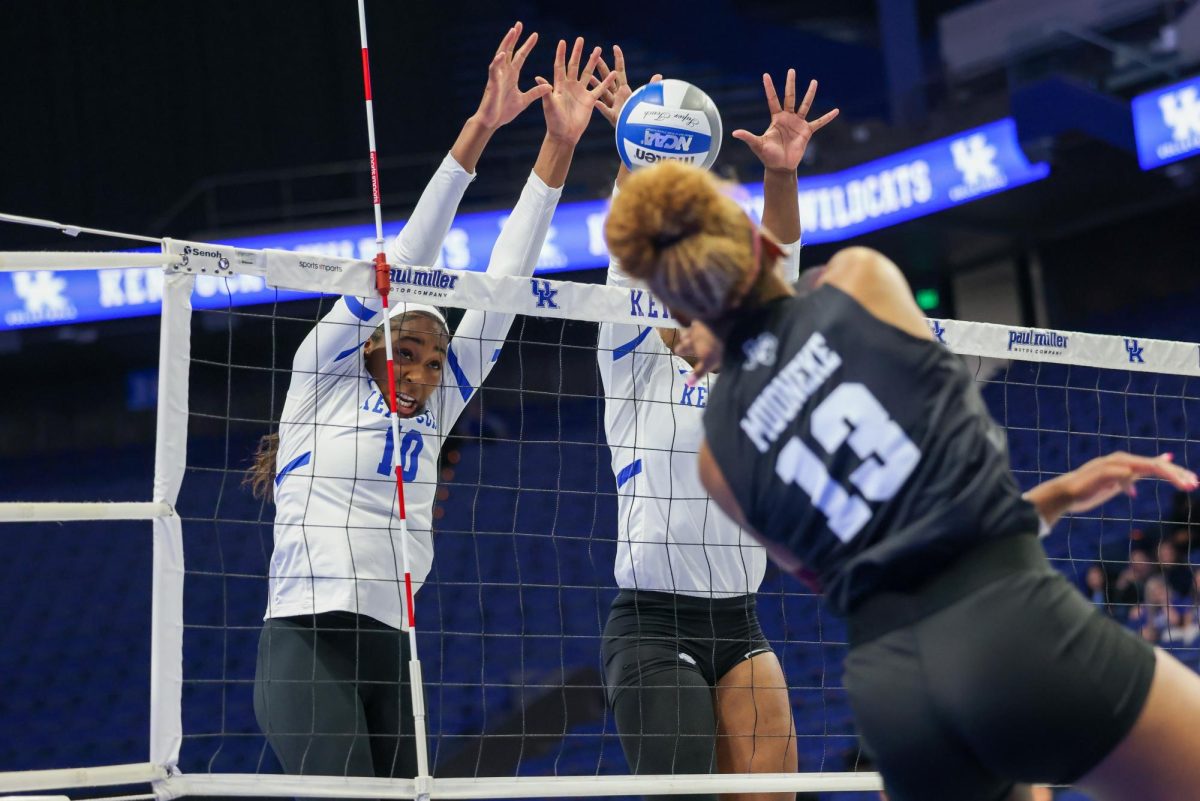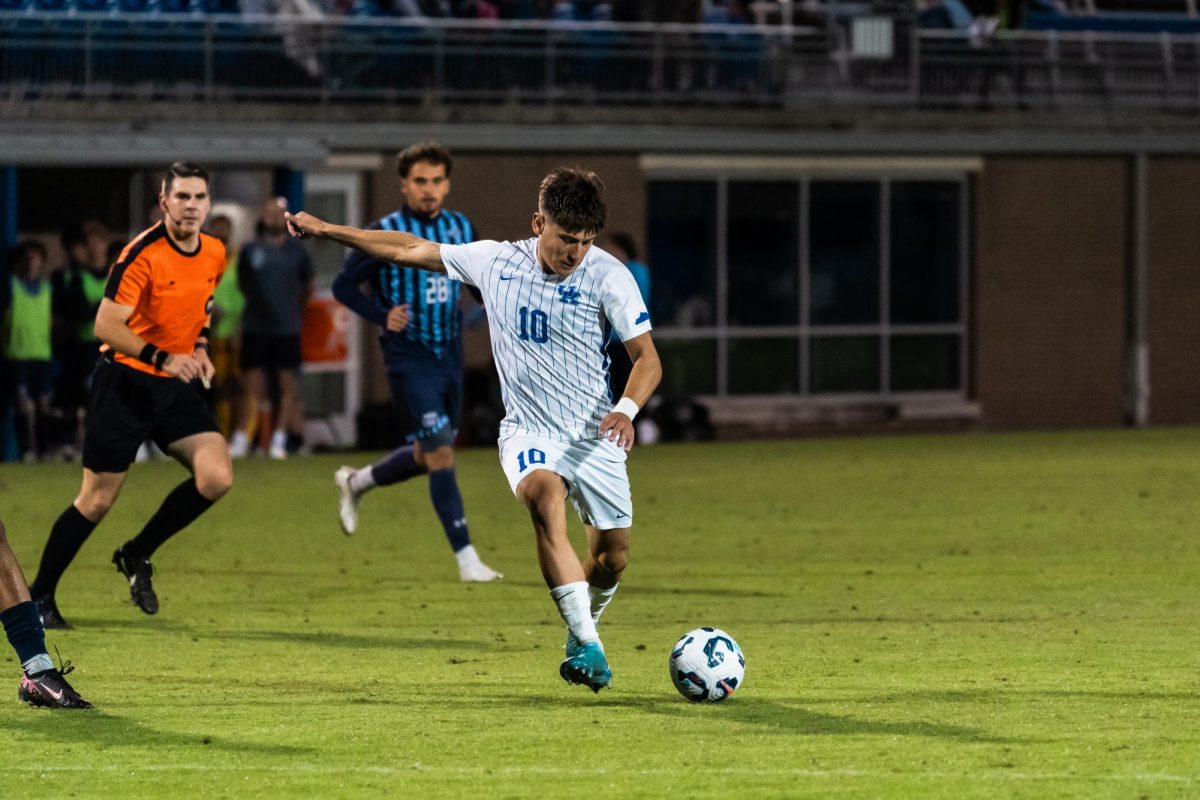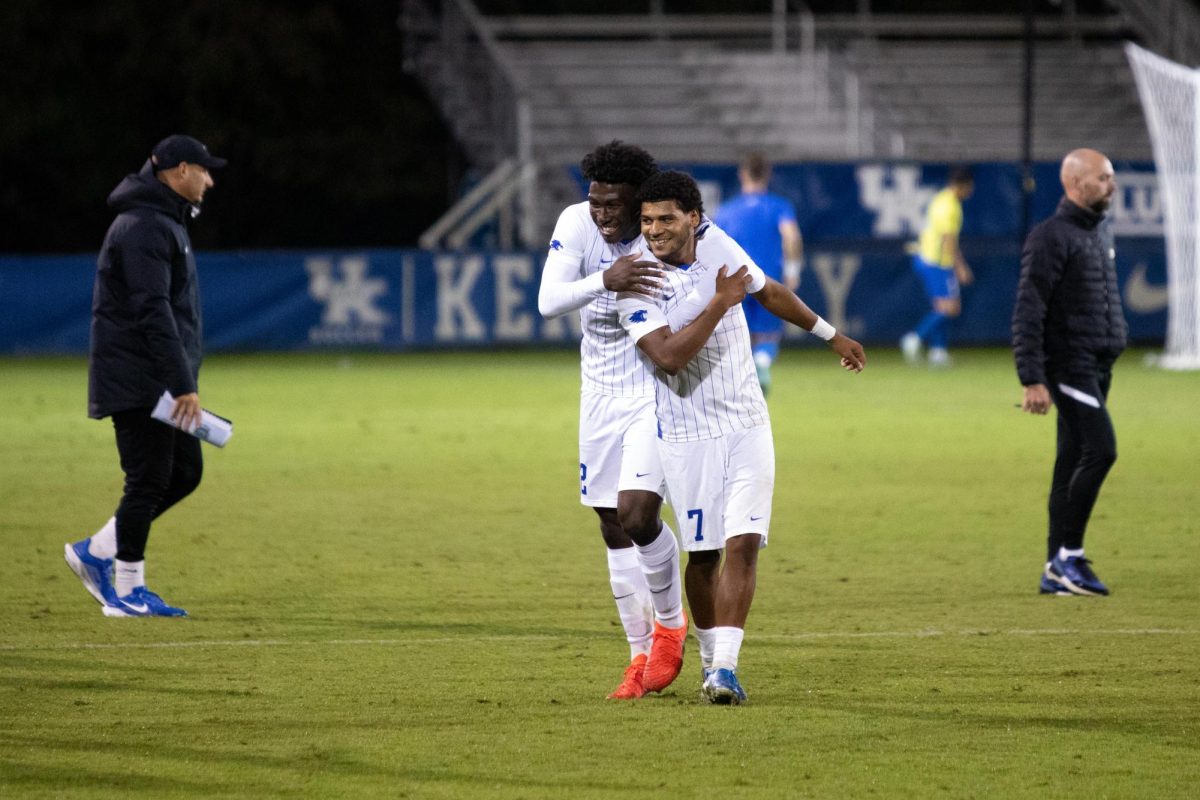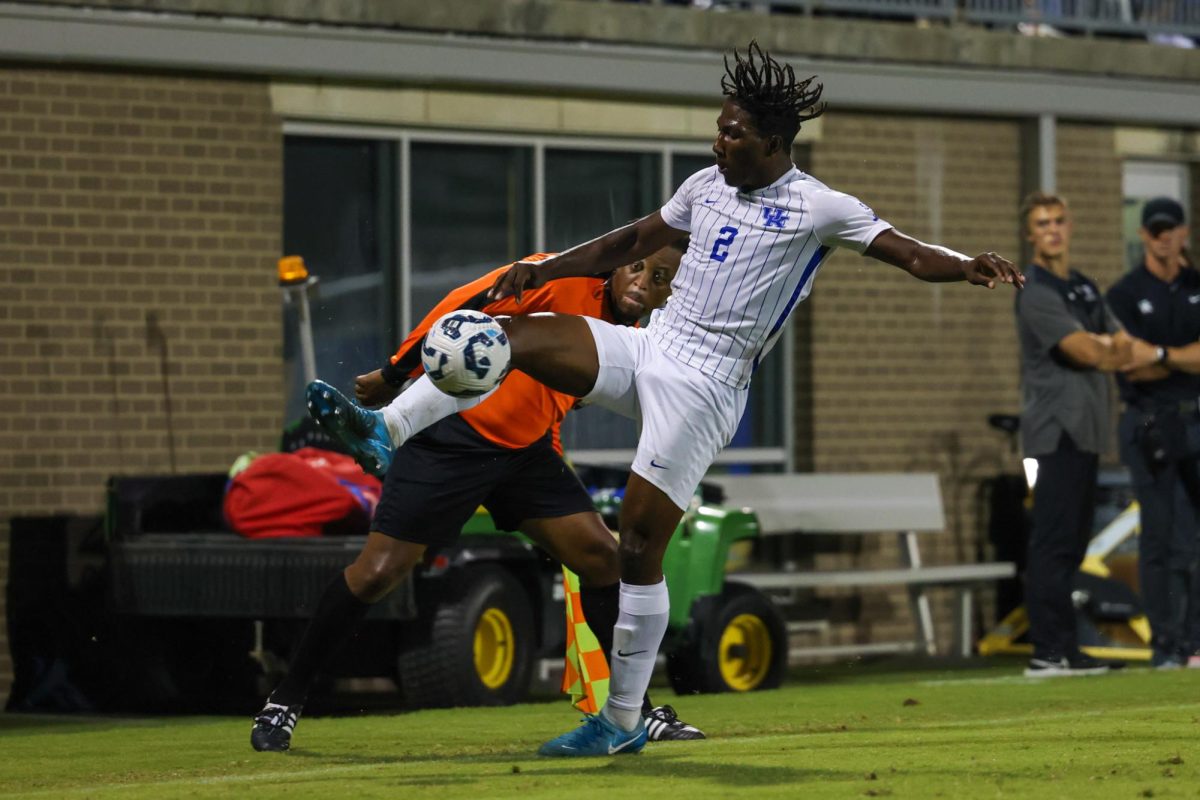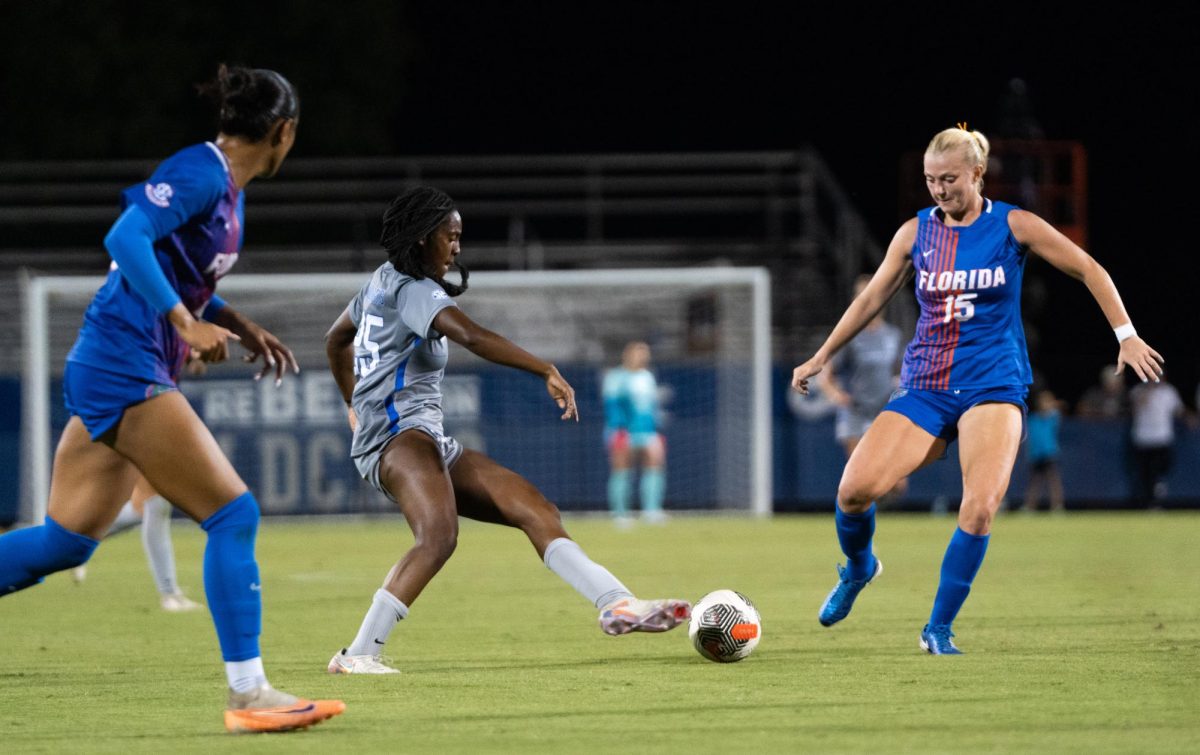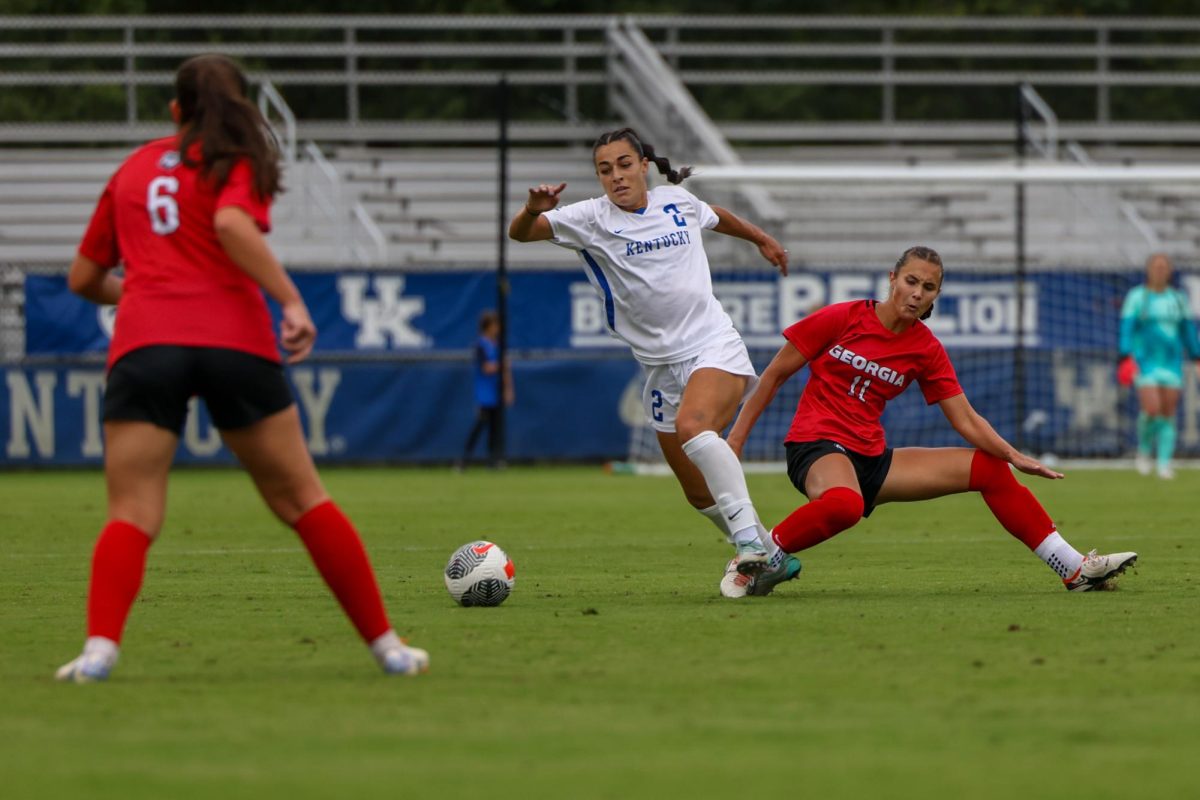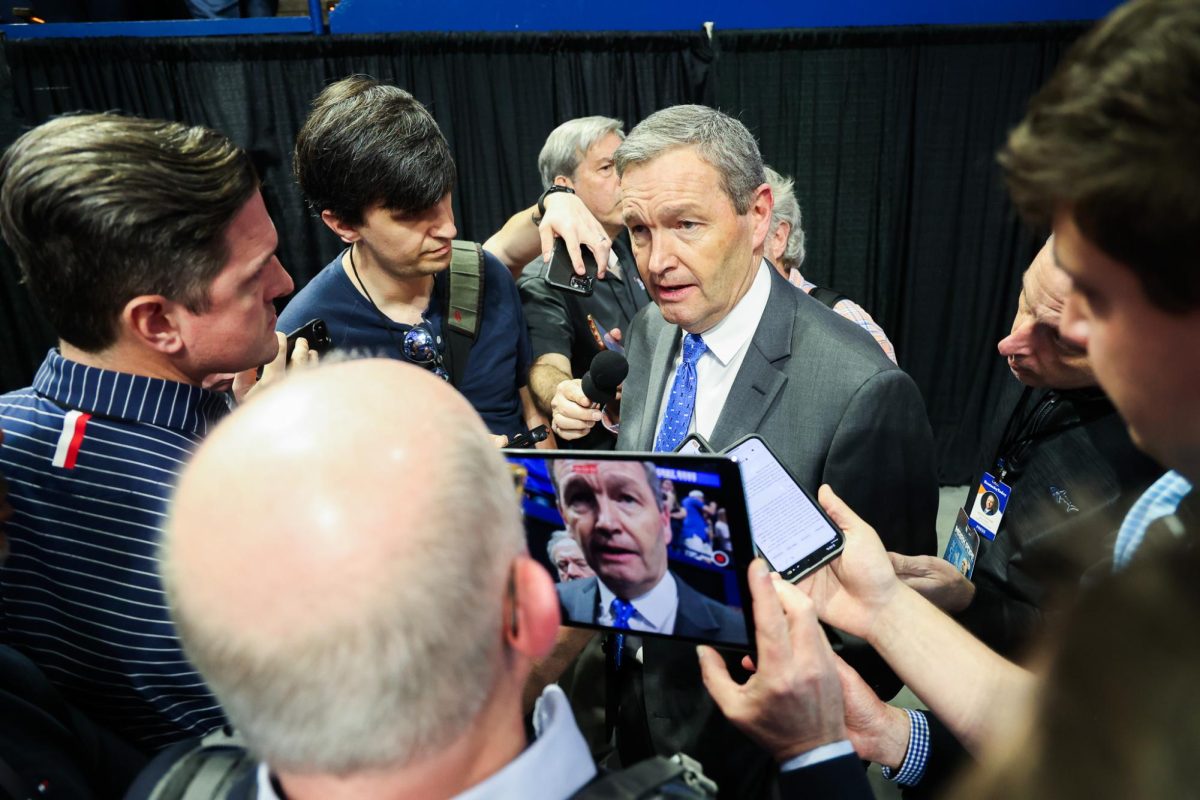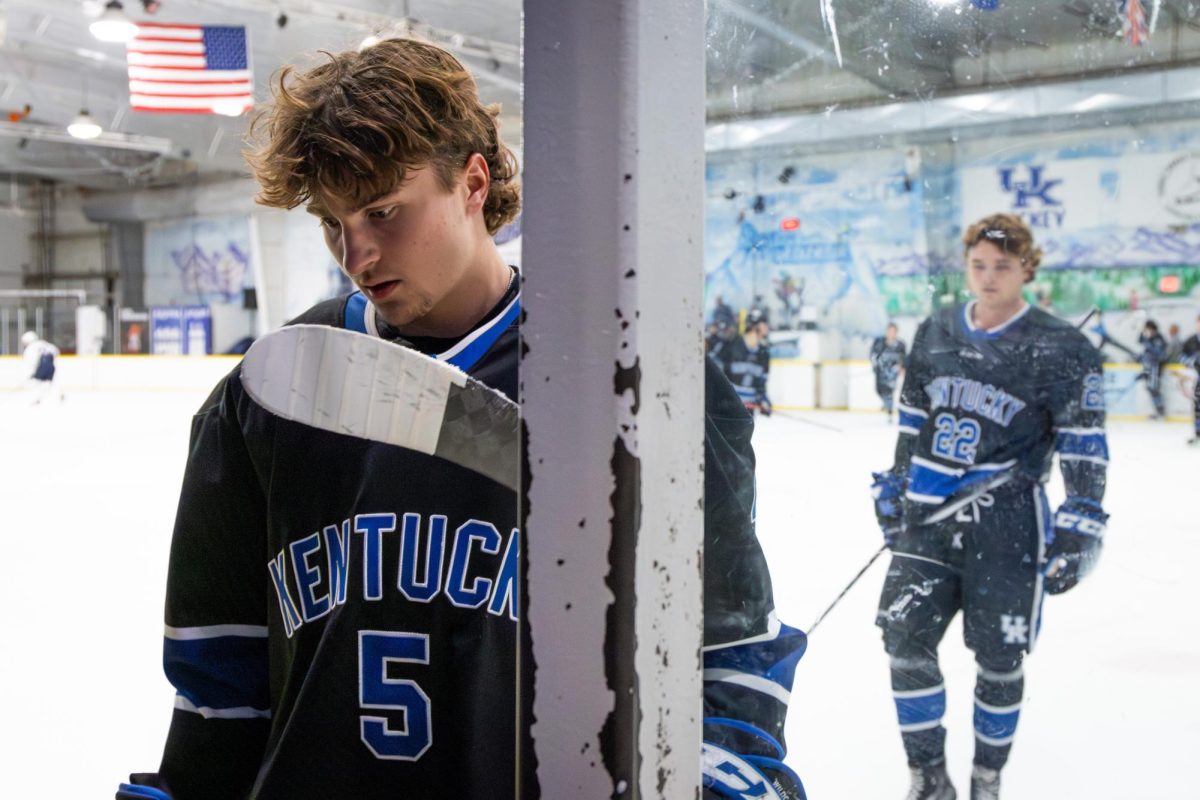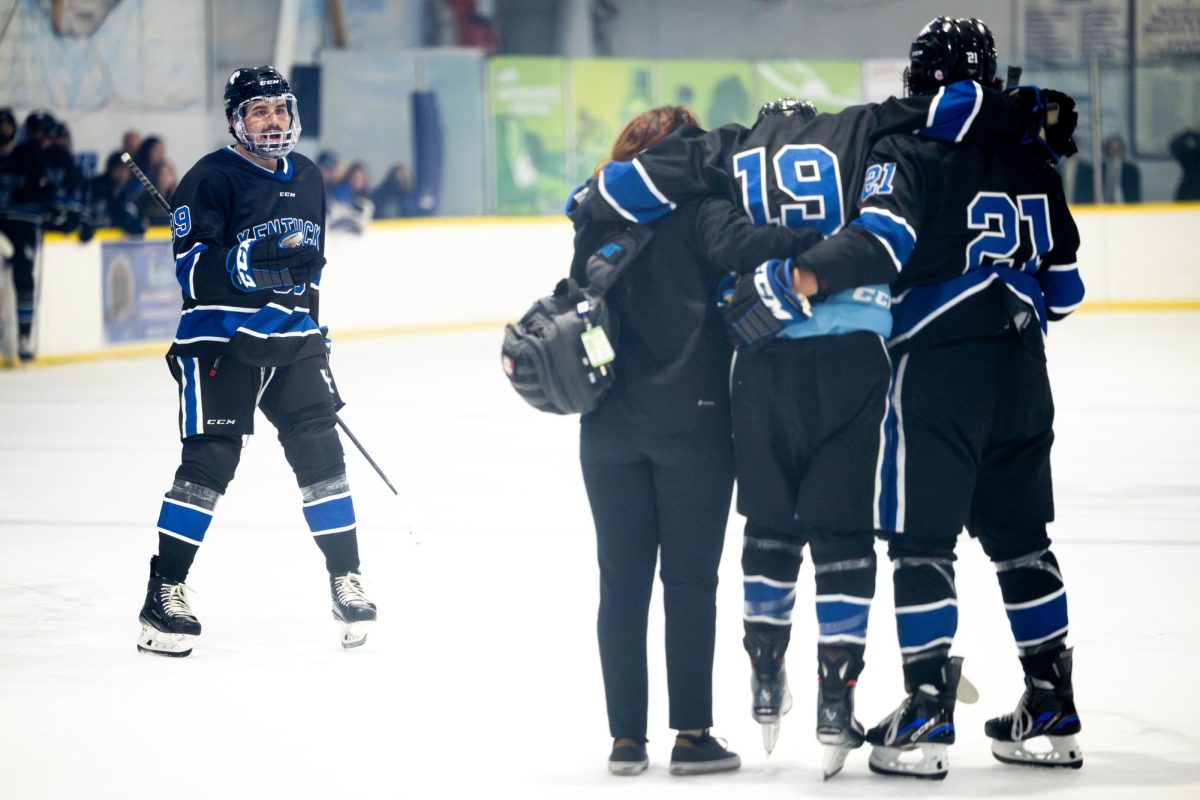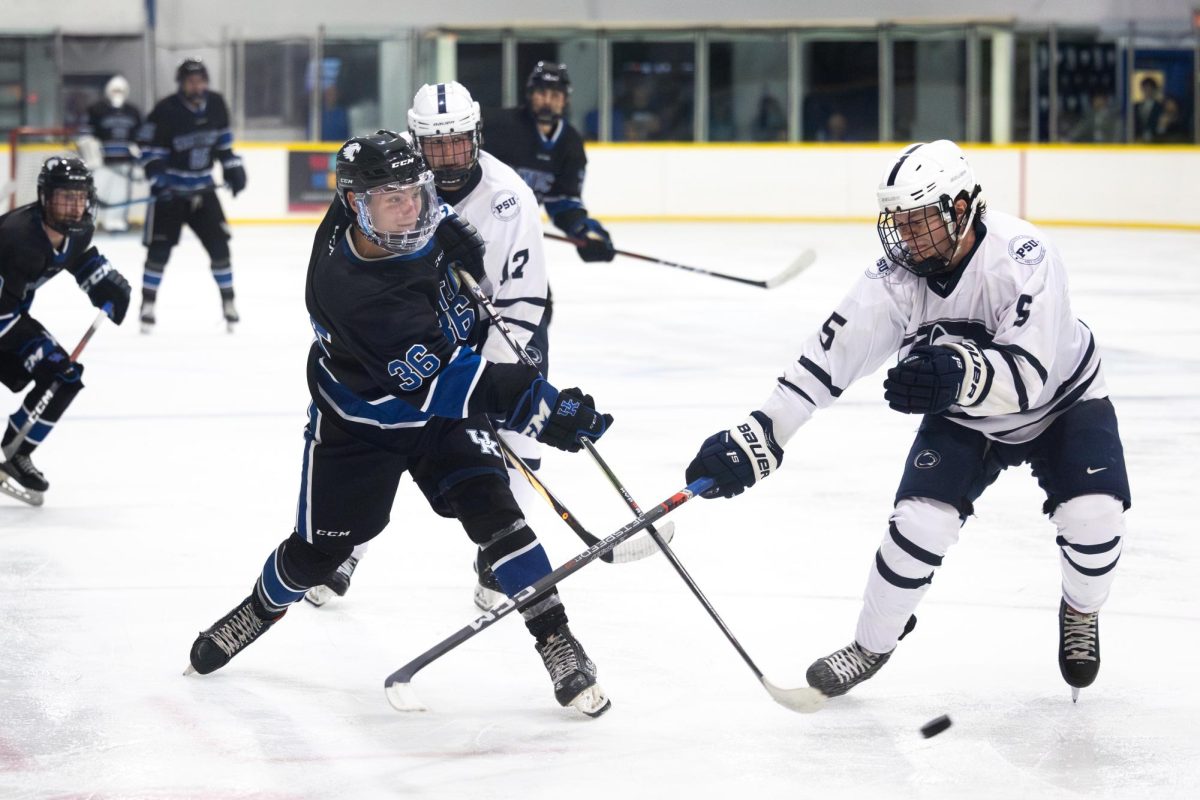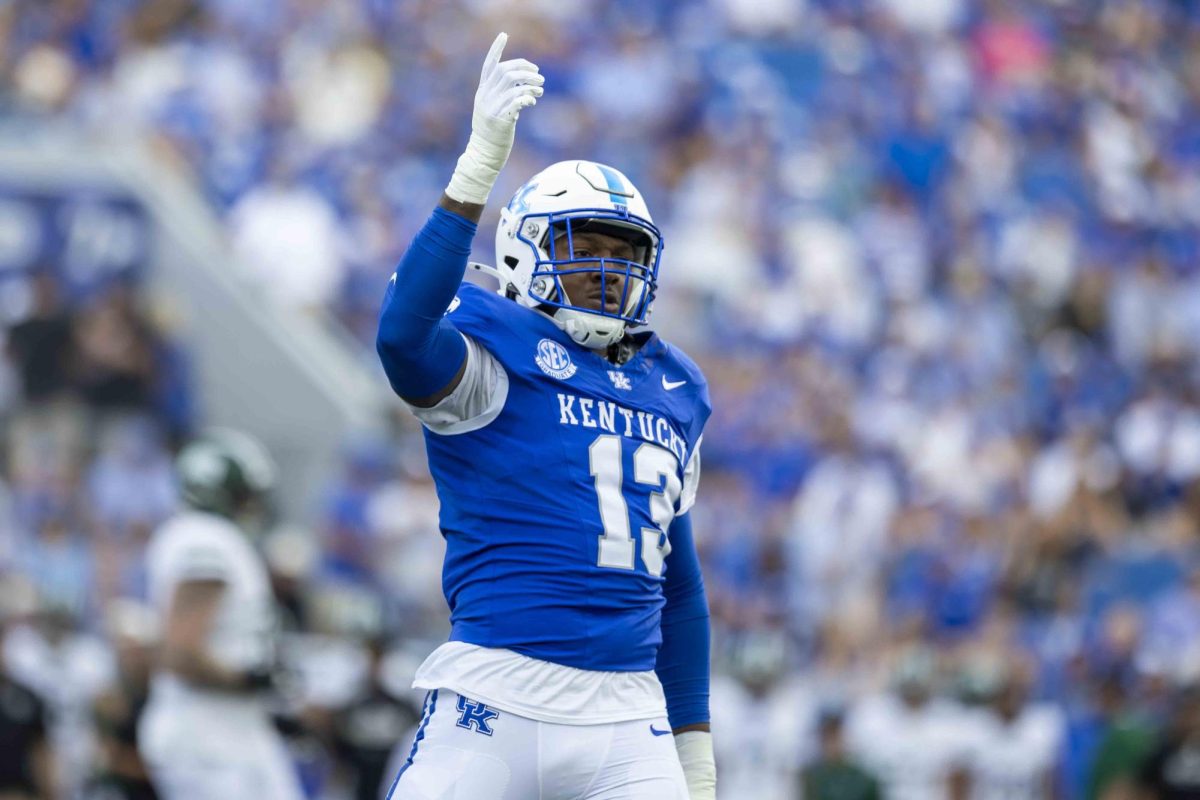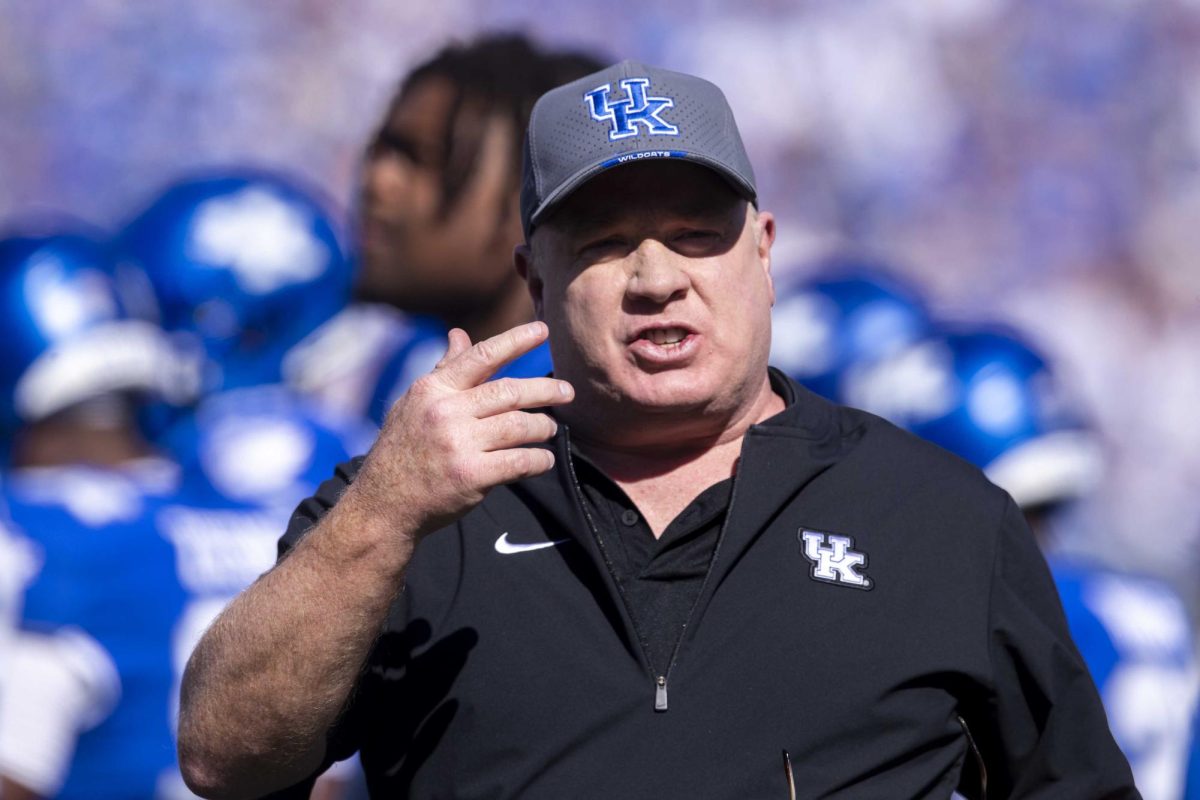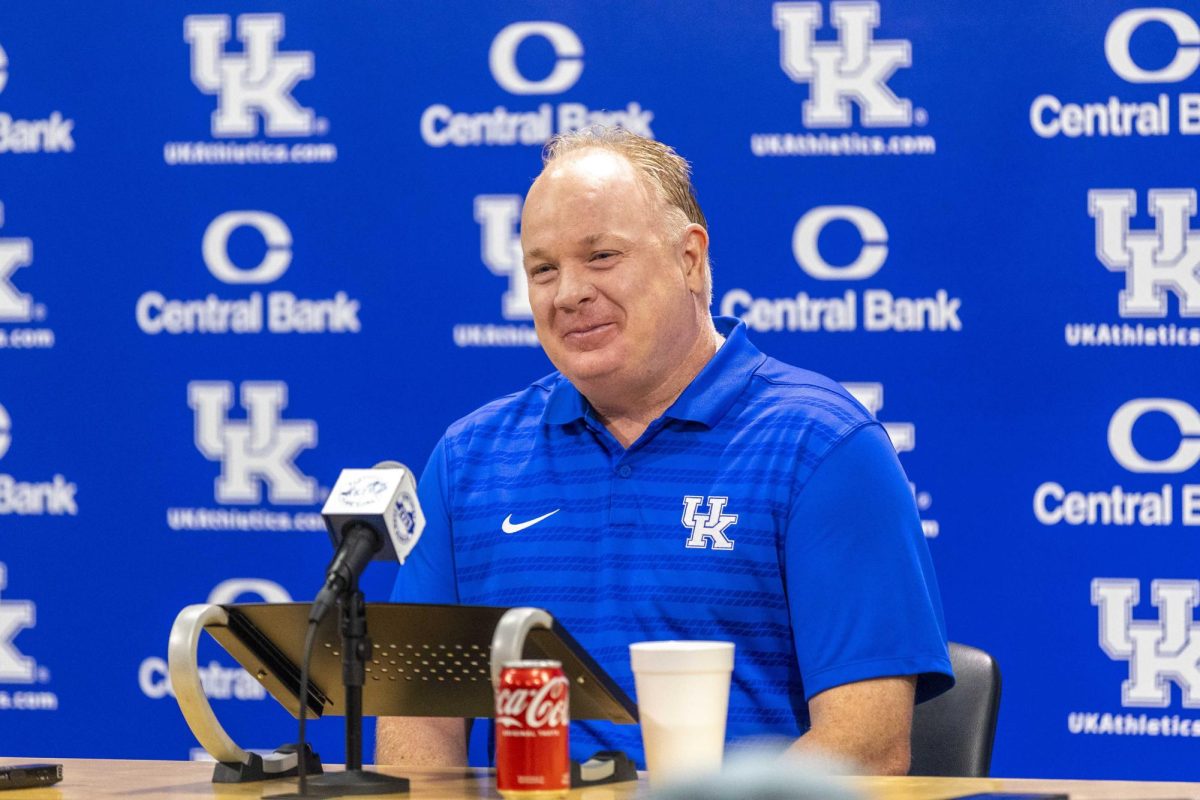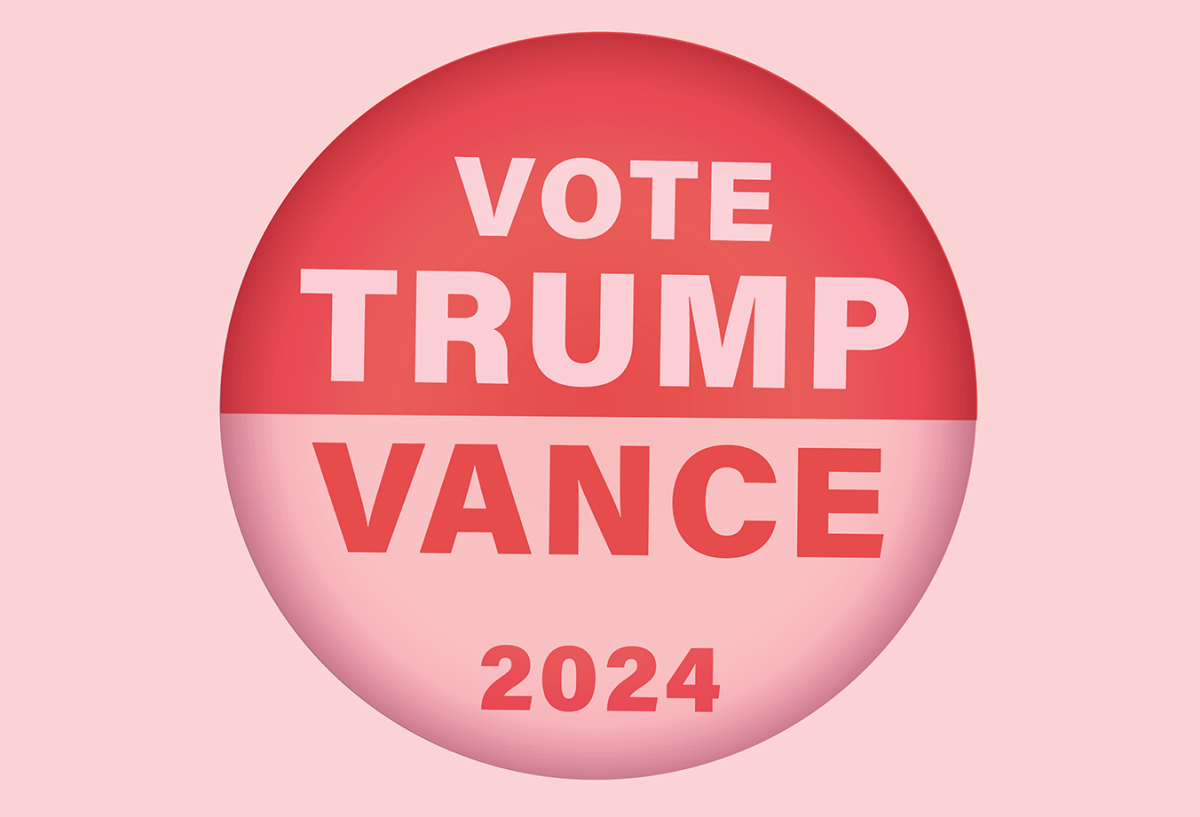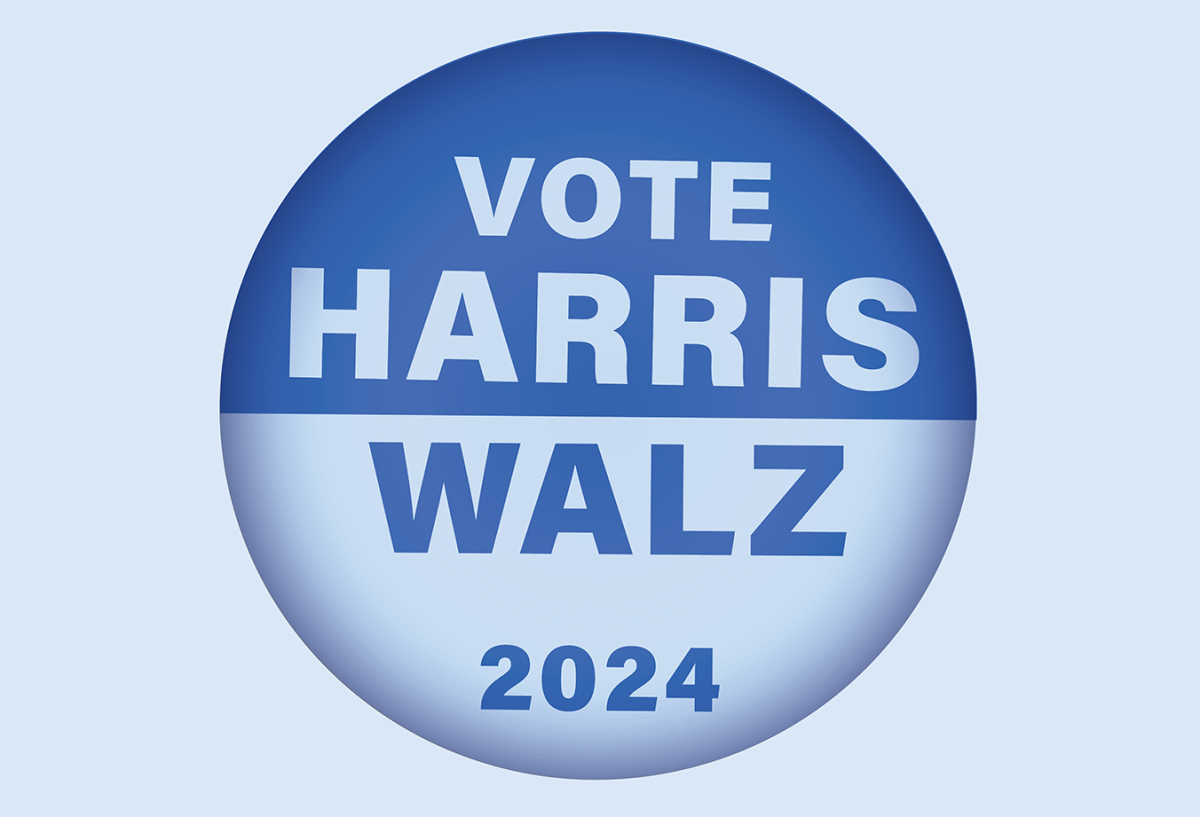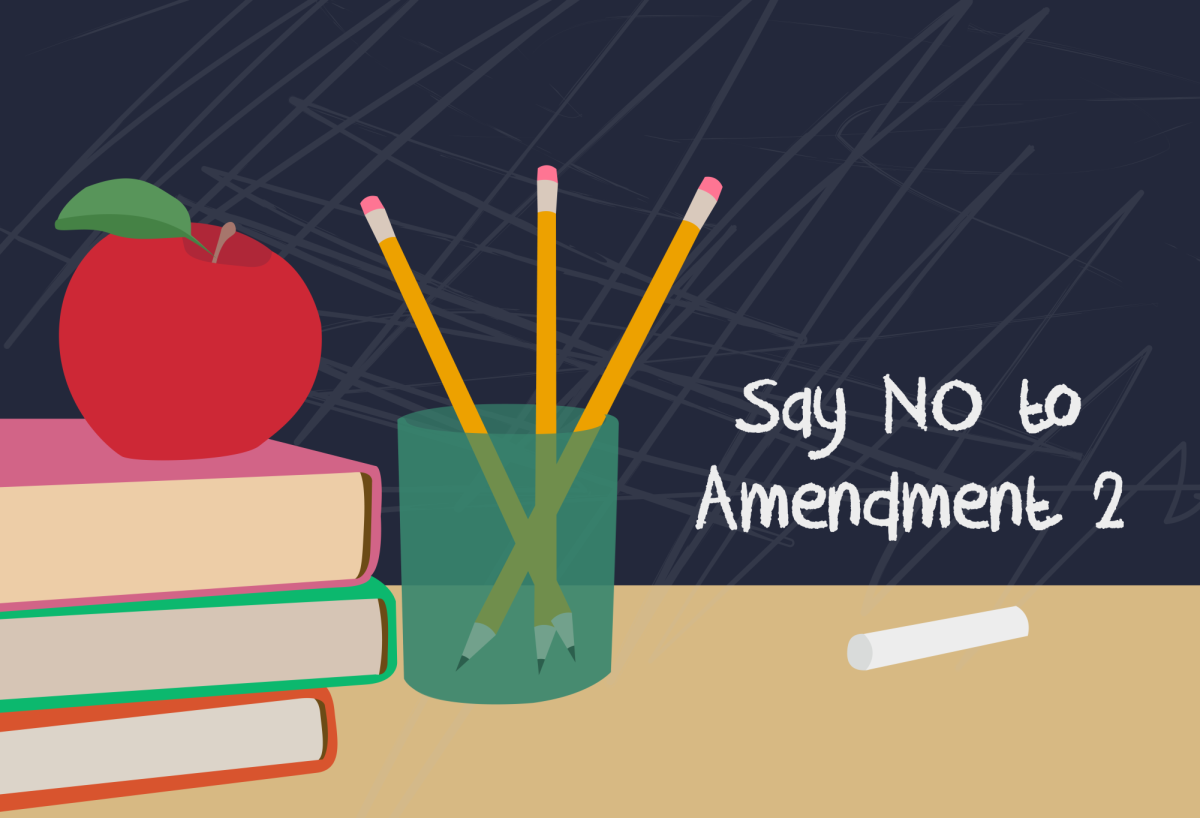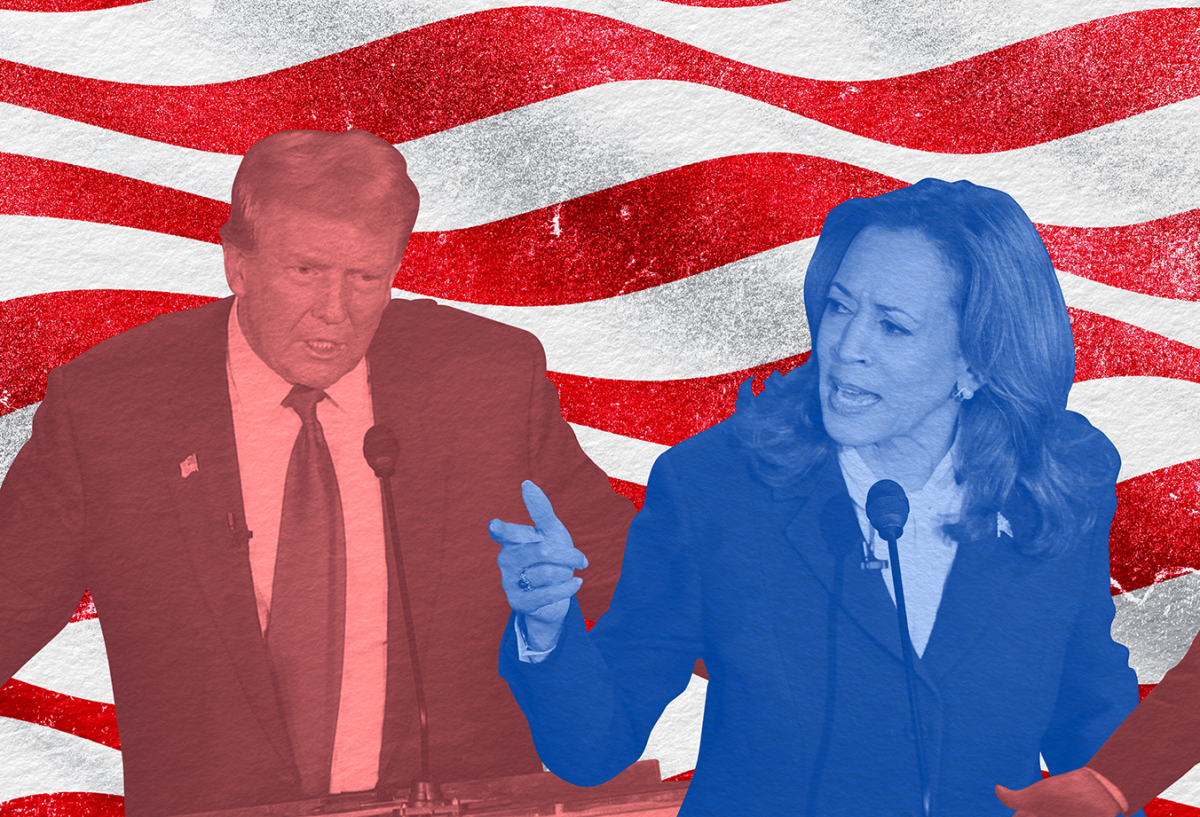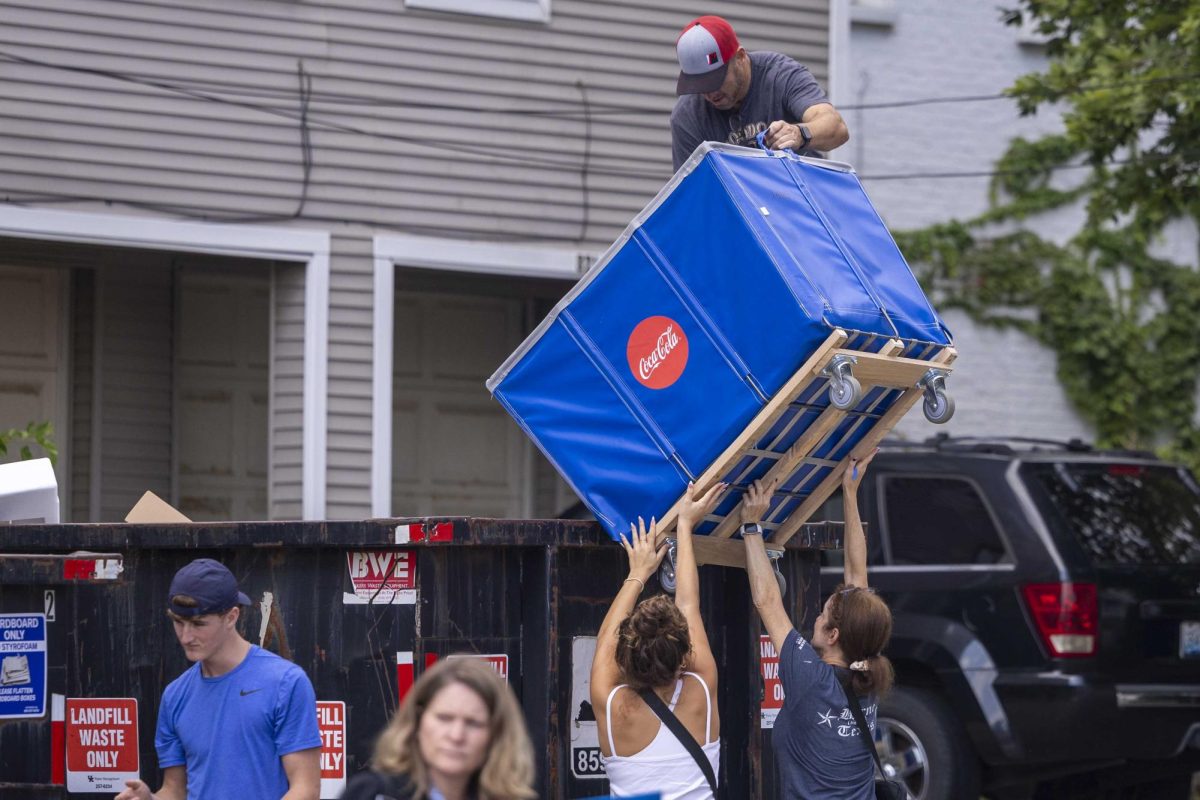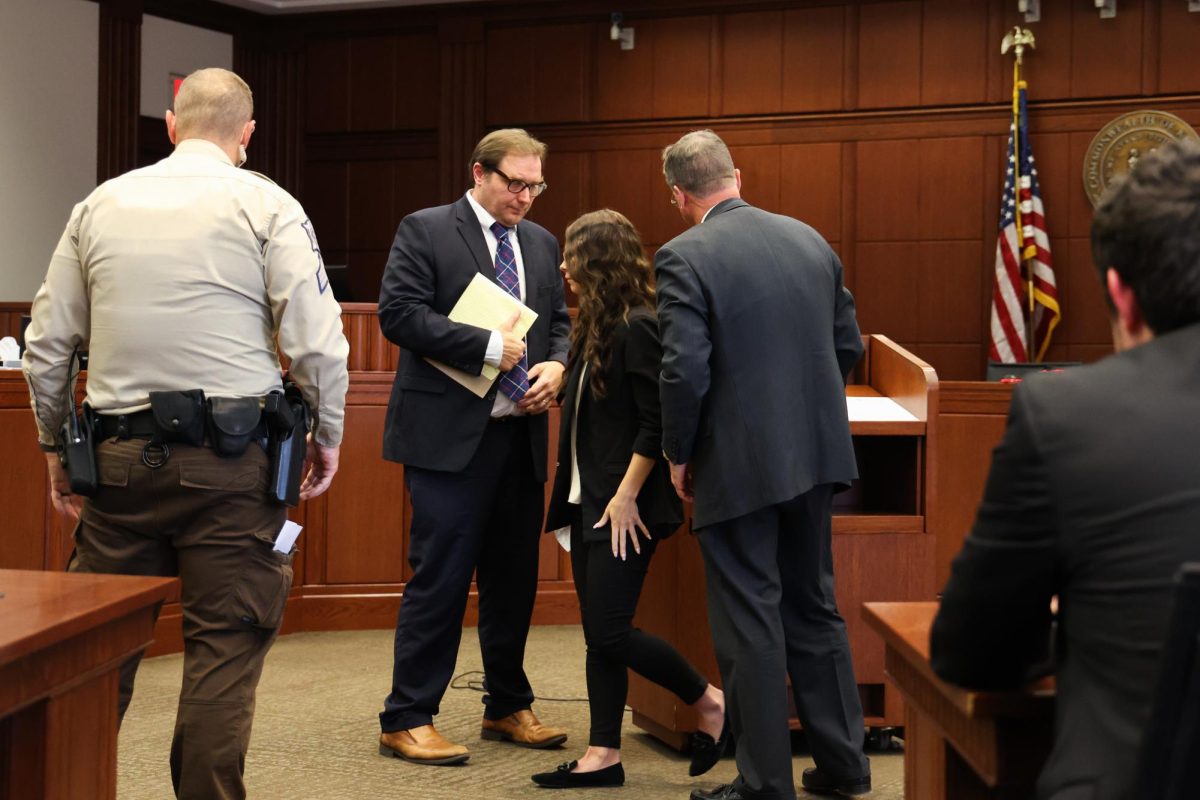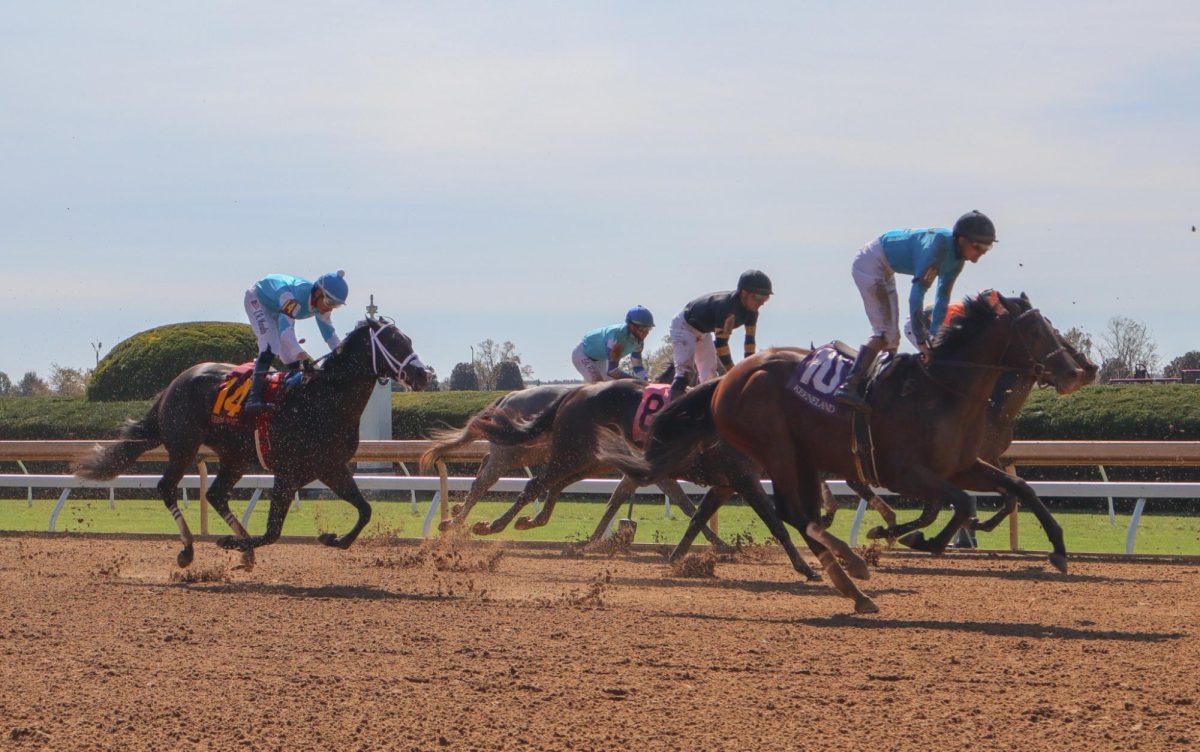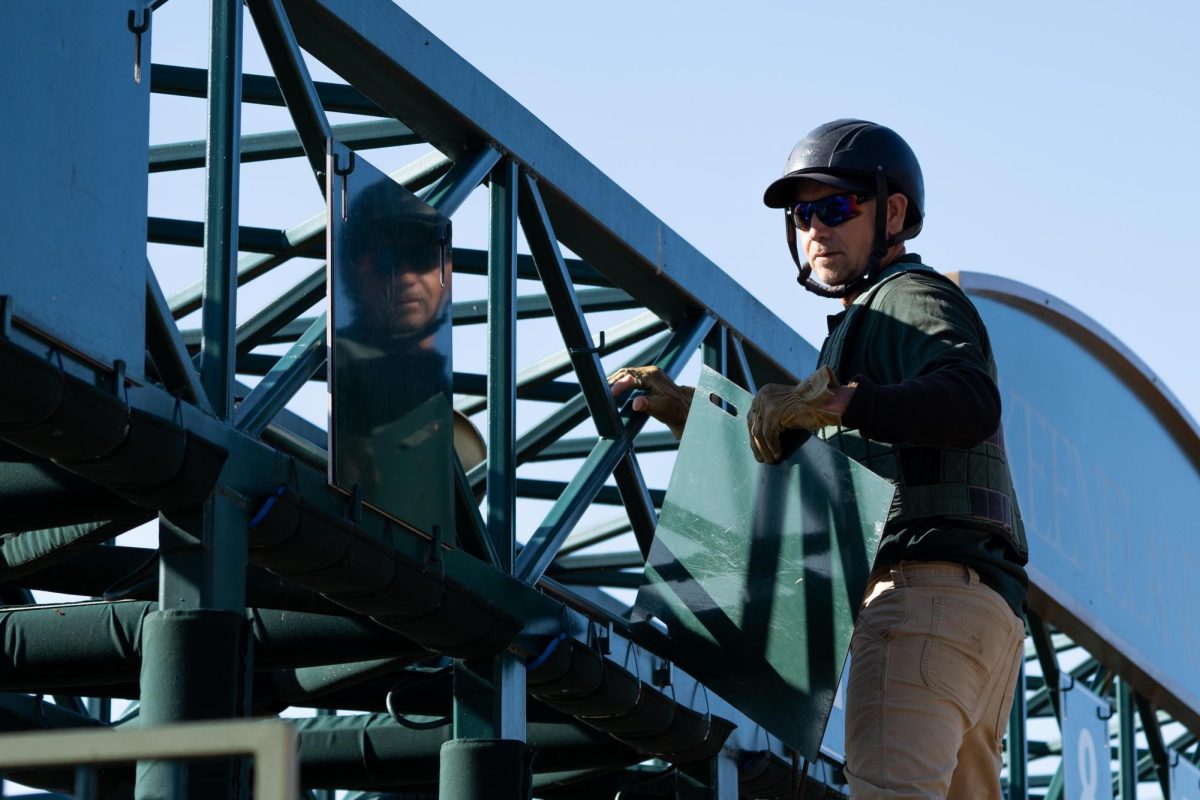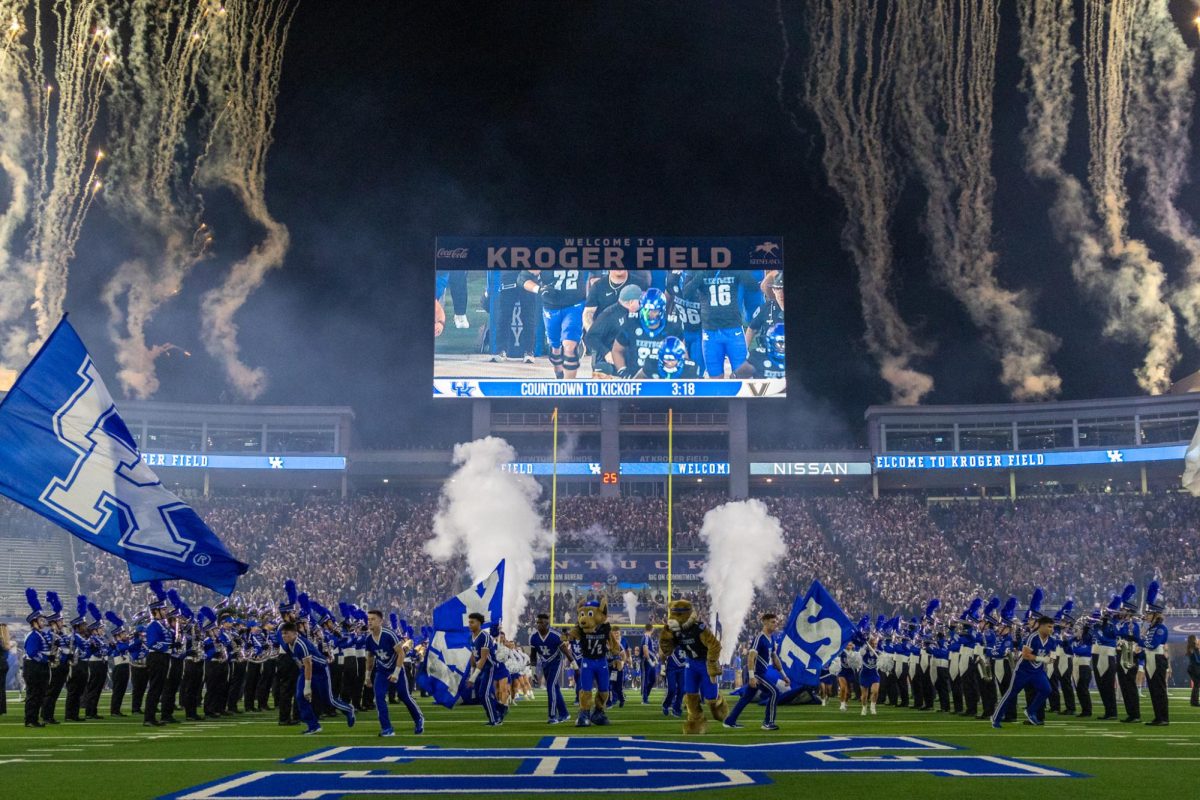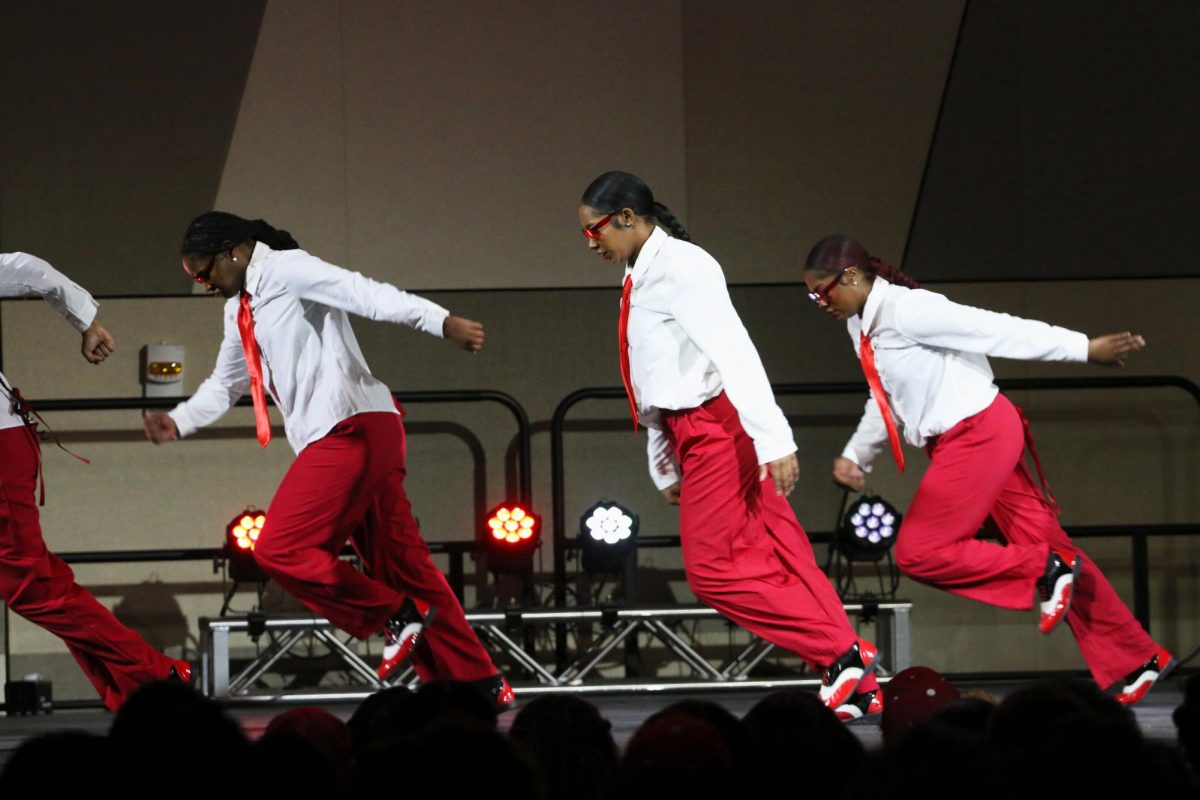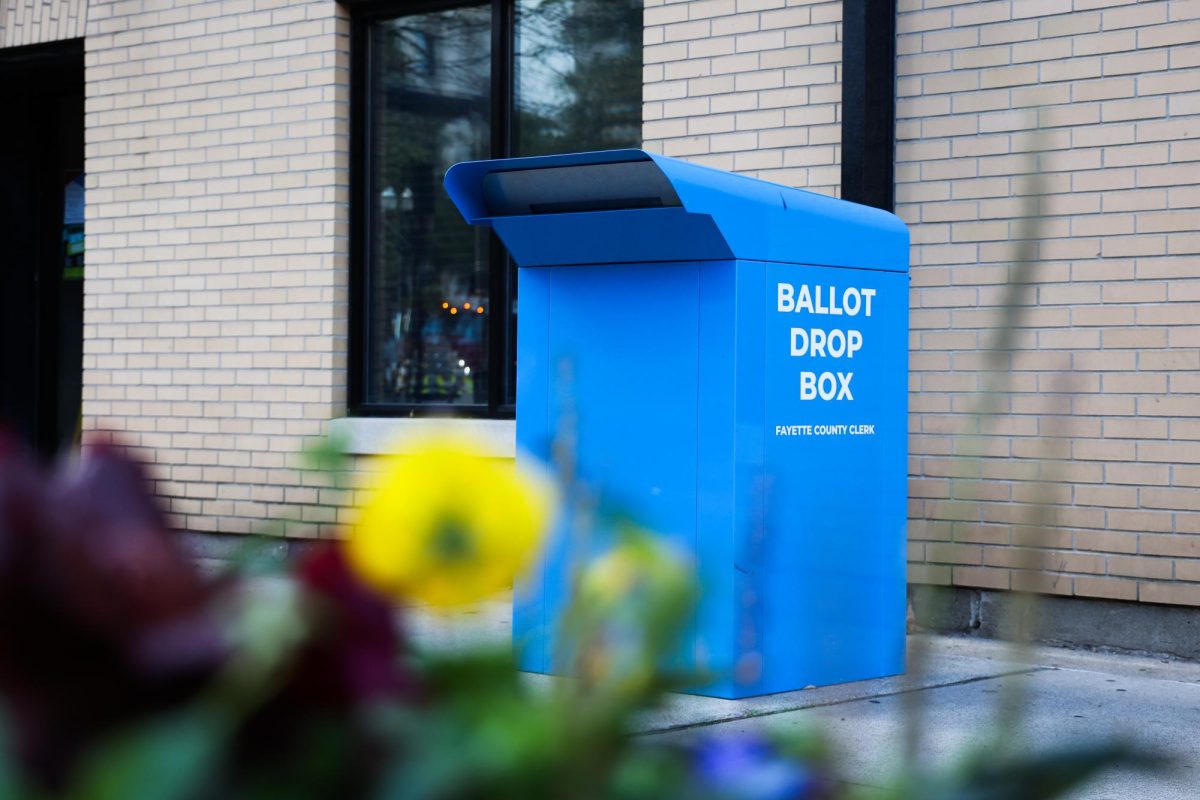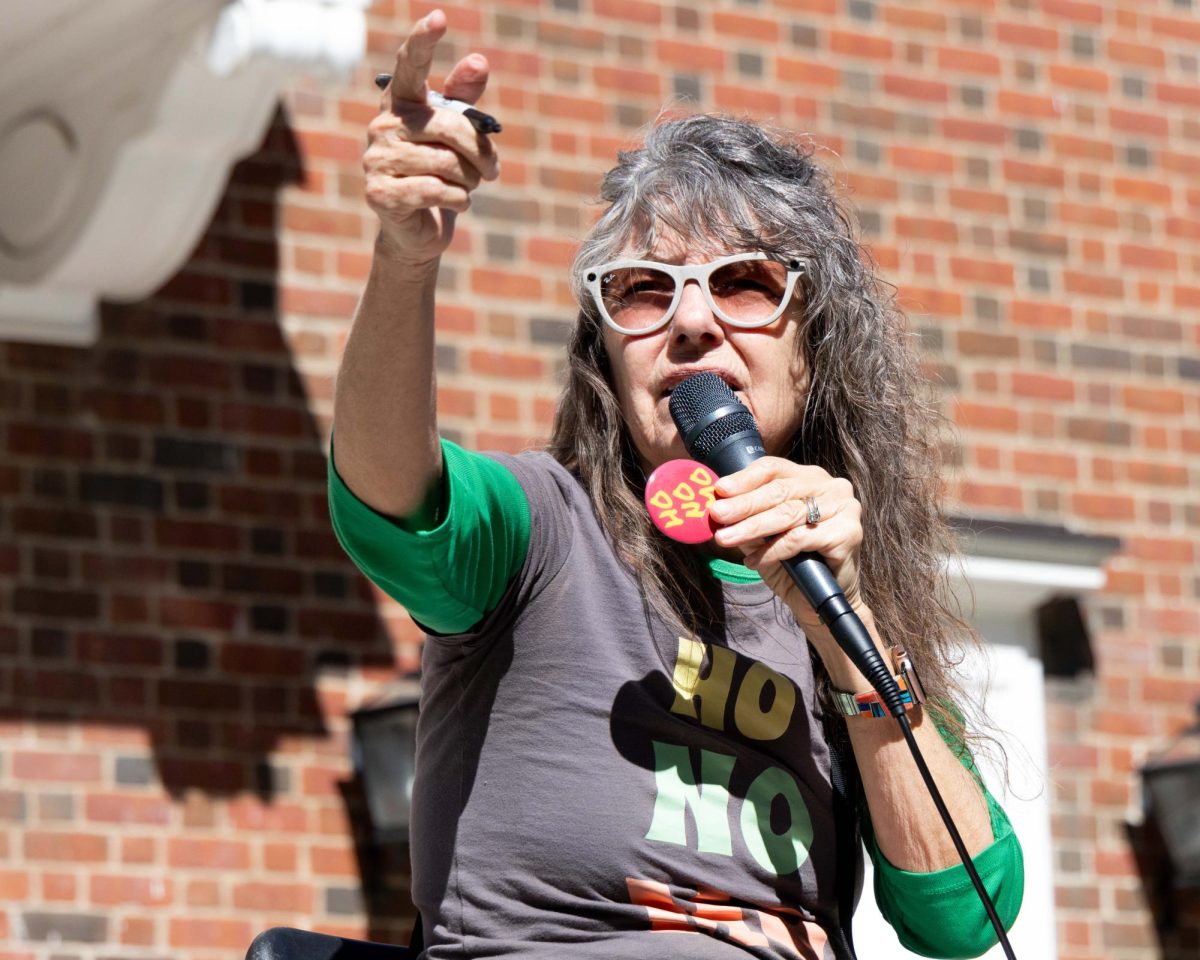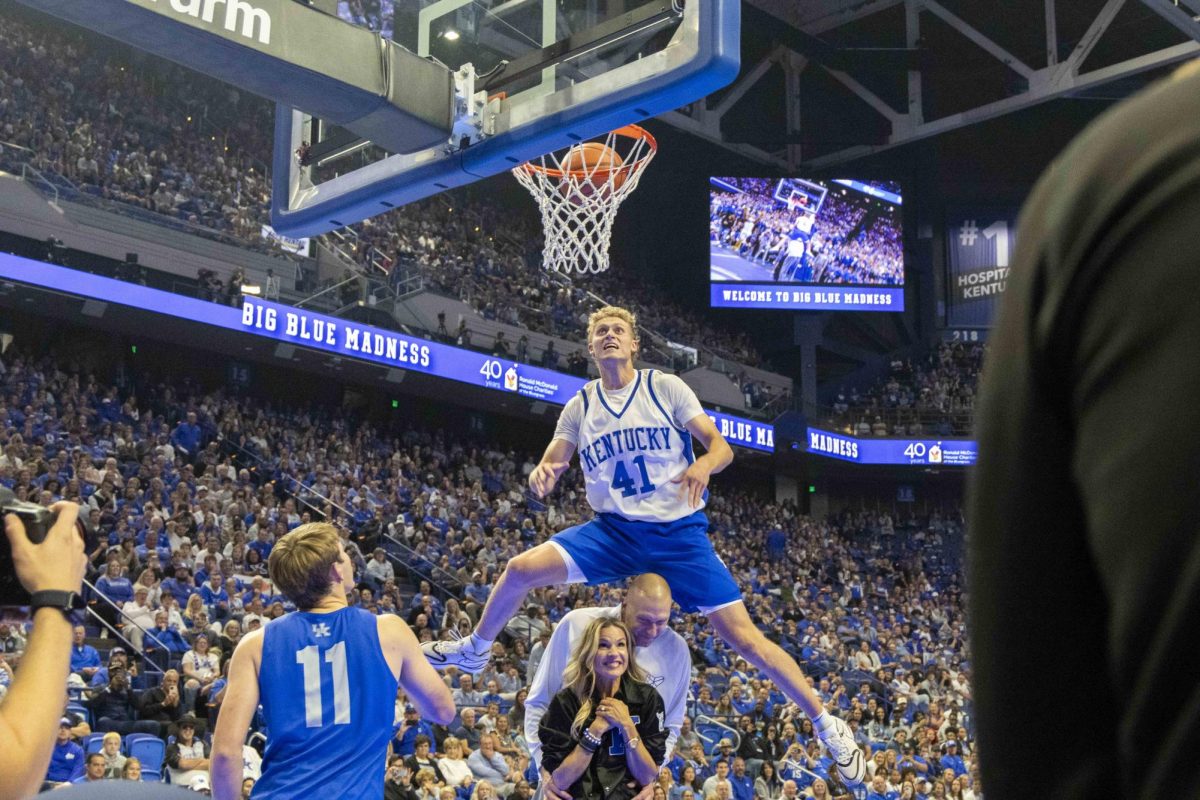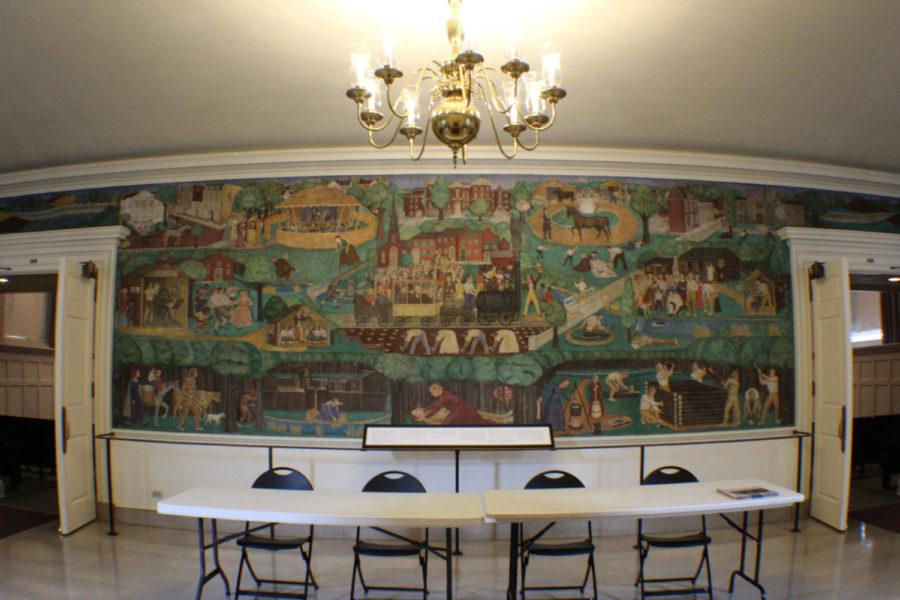Mural still standing months after promise to remove
Mural in Memorial Hall on the campus of the University of Kentucky on Friday, March 31, 2017. Photo by Adam Sherberg | Archive
February 8, 2021
UK has not started the physical removal process of the controversial Memorial Hall mural.
Following the killing of George Floyd and racial injustice protests in mid-2020, President Capilouto announced the removal of the controversial mural in early June 2020.
Eight months later, the actual removal process has yet to begin.
“This is a complicated issue and process. It’s better to do it right in the pursuit of a long-term answer than some quick fix,” UK spokesperson Jay Blanton said.
Blanton said that the university is following through with their promise that students will no longer have to view the mural by keeping Memorial Hall closed.
“We have continued to honor the promise that was made to students that they would not be required to view the mural by continuing to keep the facility closed for the time being,” Blanton said.
Blanton said the building will remain closed “until a final solution is reached.”
“In the meantime, we will continue to evaluate our options for moving forward,” Blanton said.
Blanton said he did not have any information on what those options are at the moment. Blanton also said a committee to oversee the removal of the mural has not been formed yet.
“I wouldn’t characterize it as a delay. We indicated we would take the time to thoughtfully consider a long-term resolution to this issue,
but I don’t think we set a definitive timeframe for that process,” Blanton said. “Moreover, as the building has not been utilized for some time now, we have made other arrangements for space and events, so there is no need to rush the decision because of some space utilization need.”
In Capiloto’s email announcing the removal of the mural, he did not give a timeline for the removal. However, Capilouto did call for the mural’s immediate removal.
“It’s against that imperfect and human backdrop that I am directing our facilities team to immediately begin the process of removing the mural in Memorial Hall,” Capilouto said in the June 5 announcement to the campus community.
On July 6, 2020, Kentucky author Wendell Berry and his wife filed a lawsuit against Capilouto and the university to stop the removal of the mural for numerous reasons including that it was publicly funded, therefore making it publicly owned, and the difficulty of taking down the mural due to it being a fresco.
Frescoes are a type of painting where the paint is applied while the plaster is still wet, thereby integrating the art into the structure of the wall itself. Because of this the removal of the mural would be extremely complicated to navigate – if the removal also attempts to conserve the work and the wall it is on.
According to a research guide by UK Libraries on the creation of the mural, “The surface is nearly indestructible.”
In a panel in the spring of last year, art historian Dr. Emily Elizabeth Goodman suggested that could be digitized if the physical original were to be destroyed in the removal process.
“Yes, you’d be losing the original material, but you’d be still doing exactly what the conservation process is,” said Goodman, who added that the original is in good condition for reclamation.
The Berrys initially filed for temporary and permanent injunctive relief to stop the removal but the injunctive relief was denied after the case moved to federal court, citing that “parties have resolved the issues relating to the need for emergency and temporary injunctive relief so that the necessity of these Motions no longer exists.”
Blanton said he is not aware of the lawsuit being a factor in the schedule for the removal process.
Khari Gardner, founder of UK March 4 Black Lives, said the mural is not as big of an issue as it is to some of his peers, but it’s removal would have a symbolic meaning for Black students on campus.
“I mean it would really just show that UK is listening to the concerns of their marginalized students and community and willing to move forward in discussion,” Gardner said.
The mural’s removal was the only one of five demands not met in some way following a 2019 protest and occupation from Black student organizations.
During a meeting with Capilouto, several students gave impassioned speeches citing why they wanted it to be removed. Chandler Frierson, one of the occupation’s leaders, said the mural represented UK’s treatment of Black students overall – focused on superficial changes, not structural issues.
Gardner said he believes the mural should be removed, but it should be placed in an art museum after the removal along with the 2018 reflective, contextual piece by Black artist Karyn Olivier.
“It’s a bare minimum commitment to students who may not want to see that in that situation,” Gardner said.
Gardner said that while the mural is a first step, the real change towards diversity lies in listening to the student organizations calling for.
“[The university should] continue to move forward with what we at UK March 4 Black Lives, the African American and Africana Studies departments, and other organizations and groups on campus are pushing for in terms of diversity equity and inclusion,” Gardner said.

